At every facility, there will be friends and foes
BLOCK THE RAYS
Keep players protected on the court with these sunglasses and sunscreens.
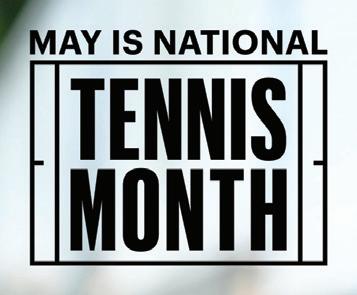
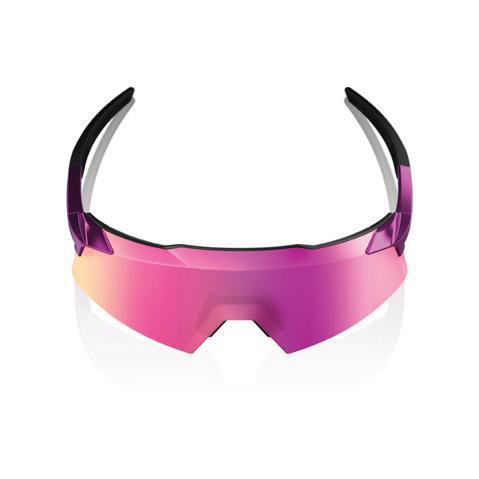
Will the changing world of intercollegiate sports spell trouble?

At every facility, there will be friends and foes
BLOCK THE RAYS
Keep players protected on the court with these sunglasses and sunscreens.


Will the changing world of intercollegiate sports spell trouble?
National Tennis Month is the perfect vehicle to drive the sport for a lifetime.

















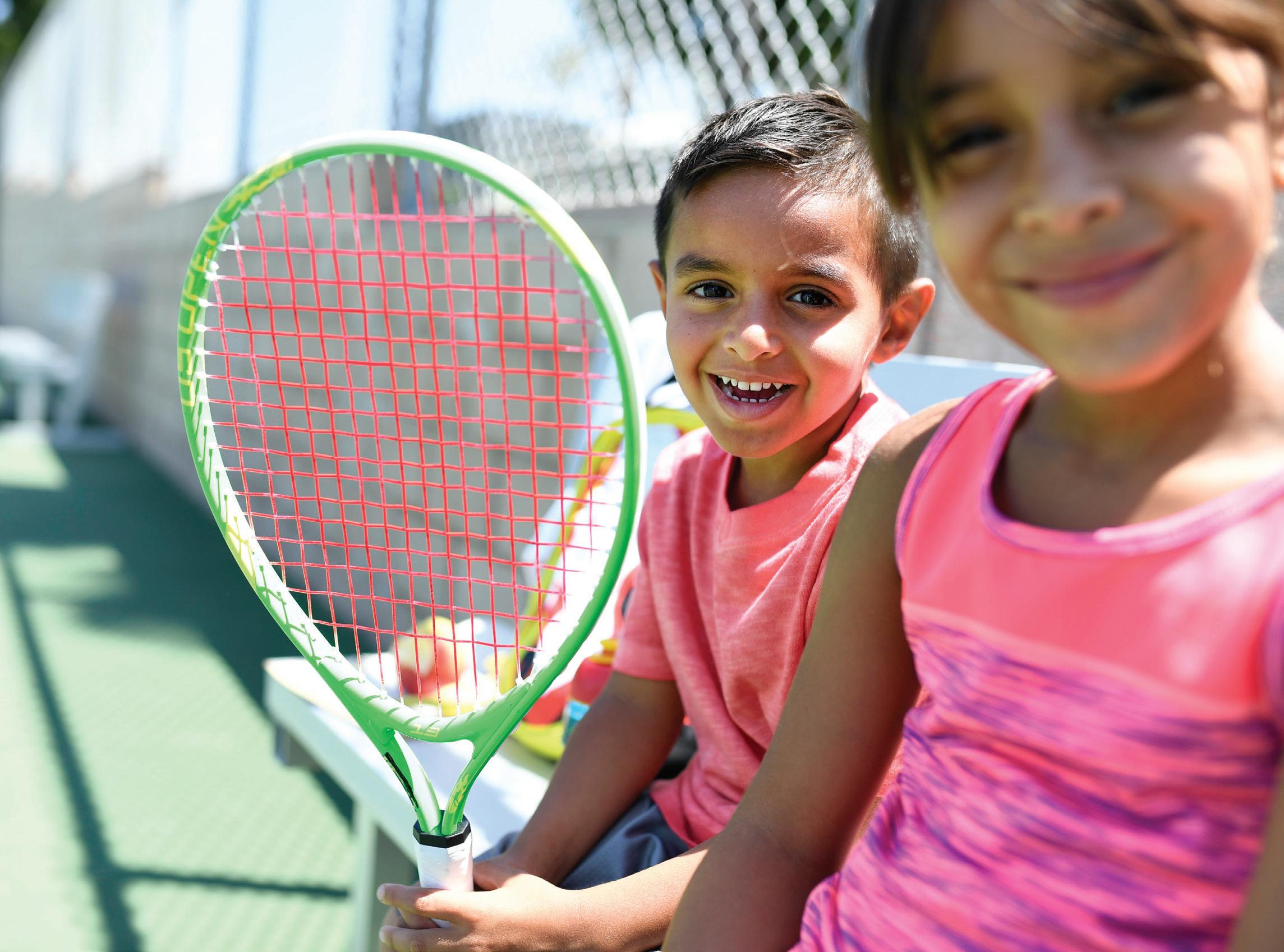


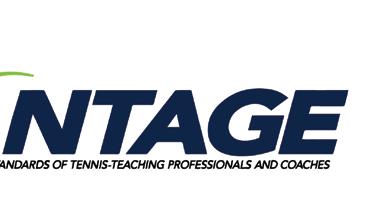


















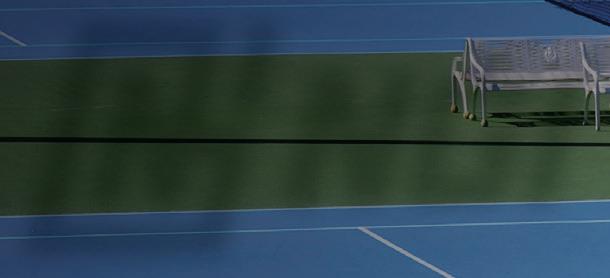




The best crack repair method available. The Shield covers the entire court & is guaranteed to protect your surface from cracks.















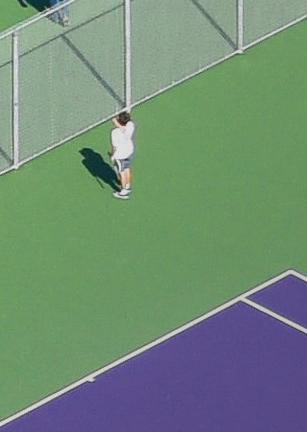





The official surface of the 2024 MAC Championship, now available with a 15 year warranty.











EDITOR'S NOTE
It’s great that May is National Tennis Month, but let’s go further and create a National Tennis Day for the US Open.
National Tennis Month is here!
We’ve been promoting National Tennis Month each May since 2021, and every year the event has grown larger and has gained more support both inside and outside of this industry. The list of businesses and partners signing on to help support National Tennis Month—and realizing that NTM is a great platform they can use to increase their own businesses— continues to grow (see story on page 29). The fact that it also helps to grow tennis participation is just a huge bonus for all of us.
Tennis participation in the U.S. has increased by 8.3% from 2023 to 2024, according to the latest SFIA research. That’s about 1.9 million more tennis players in the U.S., putting overall participation at a new high of 25.7 million. (And possibly more important, our retention has increased over the past year, reaching a five-year high.) I haven’t seen specific data suggesting why these numbers have grown, but I’d be willing to bet National Tennis Month has played a significant role.
While it’s great to see this growth in NTM continue, some say that every month should be tennis month—and I couldn’t agree more. This sport needs to be promoted year-round, not just for the month of May. We should never let up on promoting and advocating for tennis and all its great benefits. So, let’s consider taking the next step in promoting tennis at the grassroots.
Let’s declare a “National Tennis Day.”
But let’s not have it in May. Let’s declare the first day of the US Open as National Tennis Day.
Think about it: We have the largest and best-attended tennis tournament in
the world. Declaring the first day of the Open as “National Tennis Day” can directly tie the tournament to grassroots tennis in the U.S. Like National Tennis Month, the USTA (and the Open itself), the industry, tennis providers and media can all use National Tennis Day as a catalyst to further growth in tennis participation and tennis fandom.
Maybe 2025 is the perfect year to make this happen, as the US Open now will start a day earlier than it has in the past and run for 15 days. The first o cial day of main draw play will be Sunday, Aug. 24—what better way to make this even more special than by declaring that it is National Tennis Day. It can further help set the national stage for this major international sporting event.
But the real key is the idea of using this day to connect America’s greatest tournament with recreational and grassroots tennis. Like National Tennis Month, a National Tennis Day will be a key platform for local tennis providers to use to grow the game in their own communities. They can run and sponsor US Open watch parties, tying in play on their courts, signups for leagues, etc. Retailers can promote special deals tied to the Open. Professional players, and especially American players, can help promote the idea of local play around the country.
If we declare that first day of play at the US Open as National Tennis Day, the promotional ideas for tennis, both at the grassroots and for the tournament itself, are endless.
Peter Francesconi Editor Peter@AcePublishingGroup.com

PUBLISHER BILL SIMON
EDITOR
PETER FRANCESCONI
MANAGING EDITOR
SCOTT GRAMLING
CREATIVE DIRECTOR IAN KNOWLES
SENIOR EDITOR ED M c GROGAN
ART DIRECTOR
CRHISTIAN RODRIGUEZ
SPECIAL CONTRIBUTOR BOB PATTERSON
CONTRIBUTING EDITORS
KIM BASTABLE, CYNTHIA CANTRELL, PEG CONNOR, JOE DINOFFER, JUDY LEAND, GREG MORAN, KENT OSWALD, CYNTHIA SHERMAN, MARY HELEN SPRECHER, JOE TEDINO
CONTRIBUTING PHOTOGRAPHER DAVID KENAS
EDITORIAL DIRECTION 10TEN MEDIA
RACQUET SPORTS INDUSTRY 60 East 42nd St., Suite 740, NY NY 10165 peter@acepublishinggroup.com
ADVERTISING DIRECTOR JOHN HANNA 770-650-1102, x125 hanna@knowatlanta.com
APPAREL ADVERTISING
CYNTHIA SHERMAN
203-558-5911 cstennisindustry@gmail.com
Racquet Sports Industry is published 10 times per year: monthly, January through August with combined issues in September/October and November/ December, by Tennis Channel, Inc., 60 East 42nd St., Suite 740, New York NY 10165. Periodical postage paid in New York, NY and at additional mailing offices (USPS #004-354). May 2025, Volume 53, Number 5 © 2025 by Tennis Channel, Inc. All rights reserved. Racquet Sports Industry, RSI and logo are trademarks of Tennis Channel, Inc. Printed in the U.S.A. Phone advertising: 770-650-1102 x 125. Phone circulation and editorial: 917-817-0896. Yearly subscriptions $25 in the U.S., $40+ elsewhere. POSTMASTER: Send address changes to Racquet Sports Industry, 60 East 42nd St., Suite 740, New York NY 10165. Racquet Sports Industry is the official magazine of the USRSA, RIRG and ASBA.
Looking for back issues of Tennis Industry/Racquet Sports Industry? Visit the archives at our website at TennisIndustryMag.com for free digital versions.






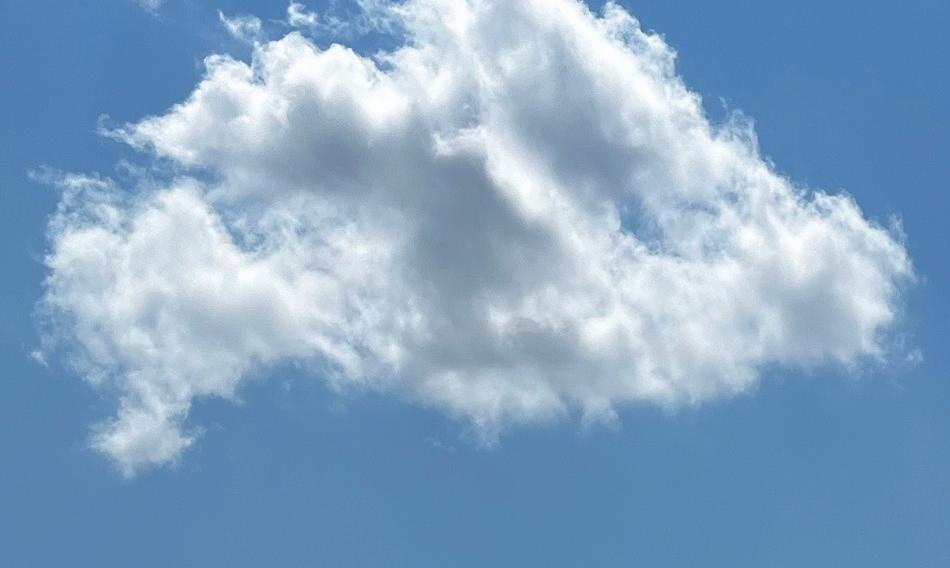
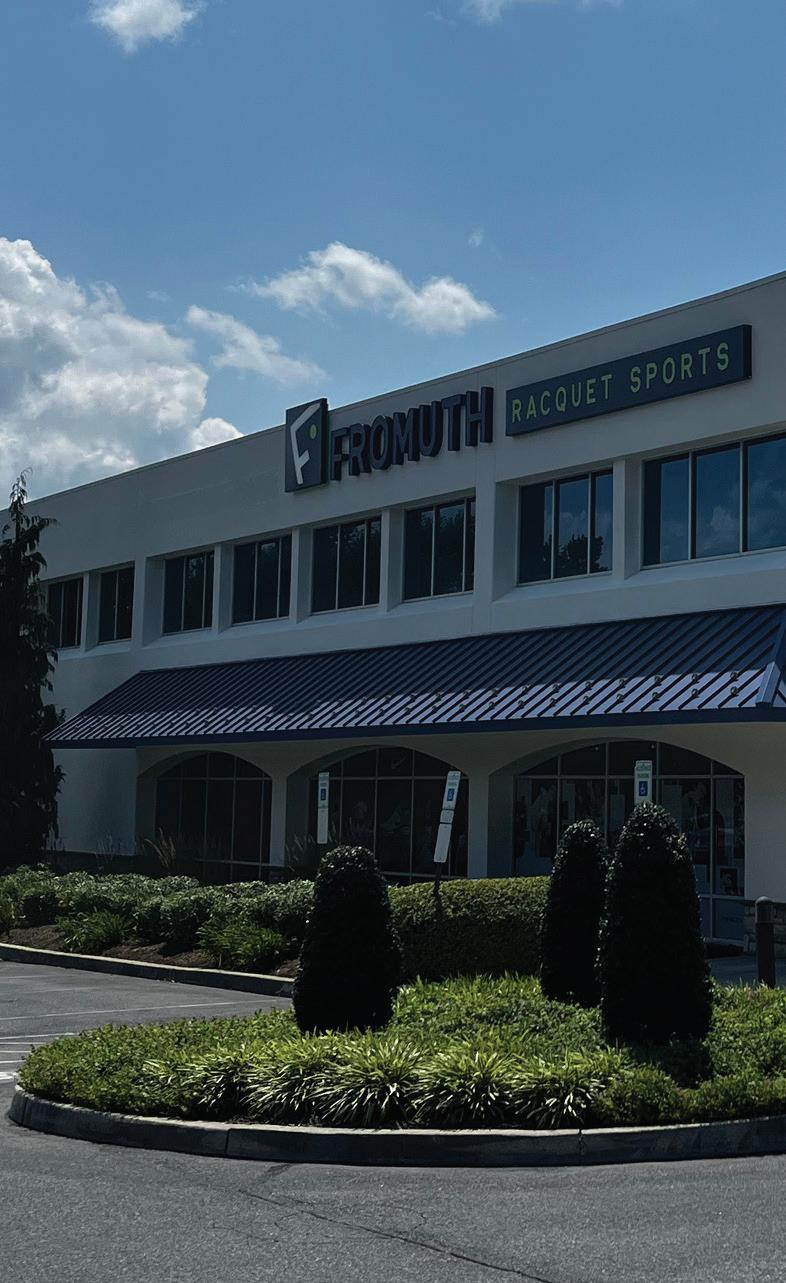


































Richard Groenewold,Owner Tennis Depot, Mcallen, TX







Although it’s referred to as clay, HAR-TRU is composed of crushed stone. This is what makes it such an effective tennis court surface. It is more durable and more consistent than its European clay court counterparts.



HAR-TRU is made from billion-year-old Pre-Cambrian metabasalt found in the Blue Ridge Mountains of Virginia. It’s a natural green stone that is extremely hard and angular, two very important qualities when it comes to tennis court construction. The angularity helps the stone particles lock together to form a stable playing surface.
HAR-TRU is known for being easier on the body and reducing the incidence of common tennis injuries. In fact, players are seven times less likely to be injured on a HAR-TRU court than on a hard court. This gives you more hours of play each day — without over-stressing joints and lower extremities.






The hardness provides exceptional durability. The natural green color is classically clay and instantly recognizable. Learn more about the courts that players love to play on.

Playing on clay — and especially American green clay — develops a complete all-court game. Players develop essential footwork and balance techniques that playing on other surfaces just doesn’t teach. The surface improves player patience, persistence, and endurance. Clay court players learn how to construct shots and points that beat higherranked players, allowing them to succeed on all surfaces.
HAR-TRU is a porous surface that reduces runoff and soil erosion. As a result, your courts can be installed in locations where many court surfaces could not be due to zoning restrictions.
HAR-TRU dries quickly after a rain and can be played through a light rain. In the heat, the surface is 10–15 degrees cooler than most other courts. Clay courts never crack, and repairs are easy and inexpensive. With simple, consistent care a HAR-TRU court will last forever.

Information to help you run your business

The second annual National Hit to Be Fit Day, celebrating National Tennis Month, will be Saturday, May 10. A featured event will be held on the courts at the USTA National Campus in Orlando, Fla., but the goal is to also have 300 facilities across the country o ering a Hit to Be Fit event on May 10.
Tennis providers can host a Hit to Be Fit event in their areas by visiting cardiotennisinstructor.com. When you sign up to host an event, you’ll receive access to a one-hour online course to learn how to run the event. (After course completion, you’ll receive a certificate to submit to the RSPA or PTR.) You’ll also have access to other complimentary Cardio Tennis courses. As well, participants will receive
instruction on how to register your Hit to Be Fit event in Serve Tennis. Registering with Serve Tennis will make you eligible for incentives such as: a $100 gift card to Midwest Racquet Sports; a complimentary one-month subscription to the FitRadio app, including a curated mix for National Hit to Be Fit Day; and your event will be searchable through marketing e orts at USTA.com.
Hit to Be Fit events are 1.5 to 2 hours long. Last year’s inaugural Hit to Be Fit event saw 200 facilities across the country hosting more than 3,000 participants.
RSPA Introduces New Padel Certification
The Racquet Sports Professionals Association has introduced its new Padel Certification, available to both new and current members.
Developed with the expertise of RSPA Master Professional and padel expert Marcos del Pilar, the RSPA certification delivers online and in-person training in padel coaching fundamentals, including technical and tactical skills and program development. Padel workshops will be offered nationwide through all 17 RSPA divisions and internationally.
RSPA says padel certification is for new or current padel coaches looking to elevate their careers; racquet sports coaches looking to add padel to their programming; former or current padel players interested in learning more about the sport and a career in coaching padel. The certification is $425 for members, $649 for nonmembers. It includes safety courses, online course and an in-person workshop.
The National Public Parks Tennis Championships (NPPTC) will be coming to Orlando, Fla., in September. This year, the event will be split into two weekends: The adult tournament will be Sept. 12-14 at the USTA National Campus, while youth competition will take place Sept. 20-21 in Orlando public parks.
This year, the NPPTC coordinates with the National Recreation and Park Association (NRPA) Annual Conference, held at the Orange County Convention Center in Orlando Sept. 16-18, and which expects more than 10,000 attendees. NRPA conference attendees can take part in a tour of the USTA National Campus on Sept. 15, which will highlight Red Ball tennis (including playing opportunities). In addition, NPPTC tournament registration information will be included in NRPA conference materials.
Carl Maes is joining the Professional Tennis Registry as its new International Director of Coaching. He will play a key role in expanding PTR’s global presence, strengthening international engagement and advancing coach education initiatives. Maes, previously the director of the













































Kim Clijsters Academy, has welcomed international junior and professional players from 62 countries to train under his supervision, including several elite players, most notably Clijsters. Since 2020, he has been living in Spain and is director at the Sotogrande Racket Center, where he developed an international high-performance training environment. He’s also been involved in many coach education programs for governing bodies around the world and has written and contributed to various articles and books.
Babolat
Partnership with Nadal Academy
Babolat has enhanced its partnership with the Rafa Nadal Academy for padel, providing official padel racquets, footwear, balls, accessories and bags. All coaches at the academy are equipped with Babolat gear, and the academy’s tournaments, school and training facilities in Manacor, Spain, also showcase the brand’s products. The partnership began with Babolat’s involvement with Nadal when he was 9 years old. The two brands have been working closely since then with Nadal’s tennis racquets and strings, the inception of the Rafa Nadal Academies, and now reinforcing this partnership to the padel division of the academy.


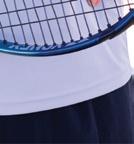
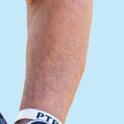




In his new role, he will oversee the development and implementation of PTR’s Level 3 courses, as well as lead Level 2 workshops, specialty courses and high-performance training programs. Additionally, Maes will facilitate Level 3 performance workshops, present at conferences worldwide, and collaborate with racquet sports leaders to elevate coaching standards and drive the growth of the profession on a global scale. He can be reached at carl@ ptrtennis.org.

Babolat is already involved in several key academy events, including supporting the Rafa Nadal Academy padel tours by The Adecco Group organized in Spain during 2024 and being a sponsor of the Hexagon Cup RNA Team in 2024. Babolat will also support the Rafa Nadal Academy Padel Tours in Spain, Italy and Poland this year.





Do you have a favorite hangout when you’re off the court? Do you know a local restaurant or bar that might be looking to generate income on their off nights? You might want to show them, and guide them to starting, a “Tennis on Tap” program.
The USTA helped set up an adult Red Ball program a few years ago at Ivanhoe Park Brewing Co. in Orlando, Fla., and the results have been impressive—for both tennis and for the brewery itself, which now is bringing in thousands of dollars on what traditionally had been a slow night for the establishment. Up to 70 players participate each season.
“It’s ‘no experience encouraged,’” says Robert Gorden, the USTA’s manager for Social Play. The program is Red Ball tennis for adults using 23-inch racquets on

shorter courts, taped out in the parking lot with portable nets. “This format is ideal for anyone looking for a fun, active, social experience. No tennis experience is necessary.”
In the Ivanhoe program, participants pay $50 for the eight-week season and

play weekly. The bar gives each player a free beer every week and the USTA supplies swag packs and other premiums. Scoring is timed, 15-minute matches.
For more information on formats, options and business opportunities, contact Robert.gorden@usta.com.

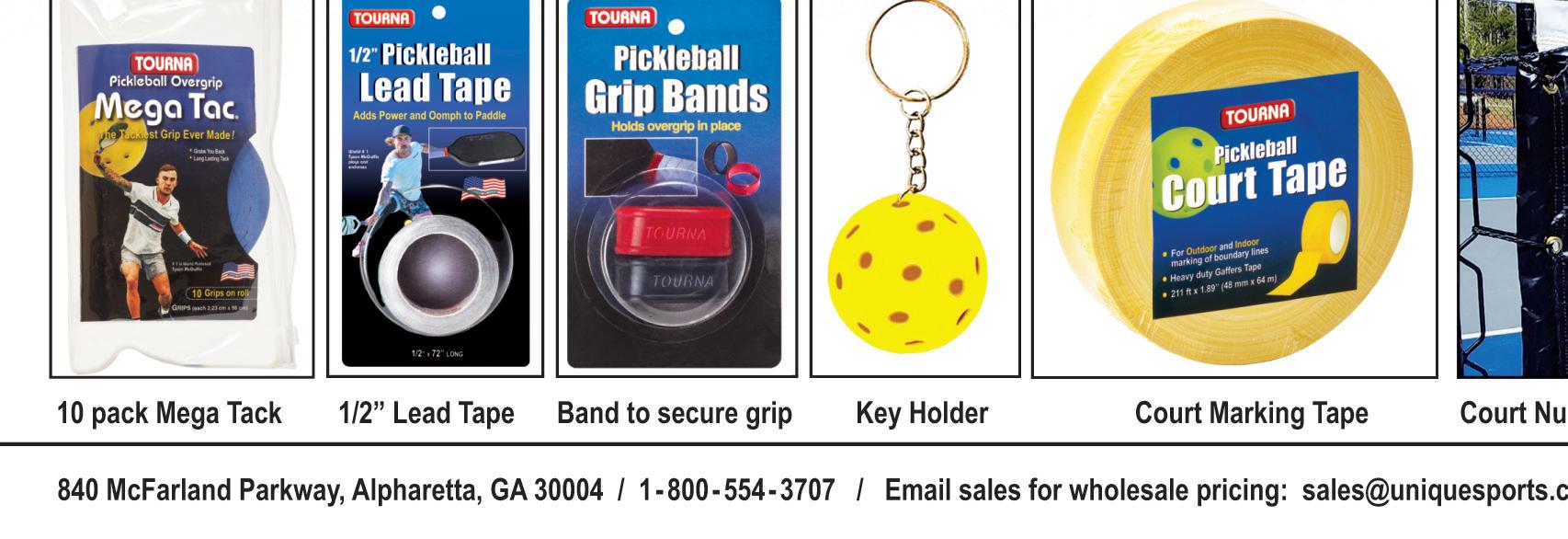

• Laykold is not re-purposed paint
• Advanced chemistry ensures greater court consistency
• Laykold’s sand blend delivers greater control of court pace and prolongs life of the court
• Higher quality latex means court pace lasts longer
• Laykold Gel is the world’s greenest court (60% recycled and renewable material
• Laykold’s automotive grade pigments retain color for longer
• Laykold’s is made in ISO certified factories in Germany, USA and Australia

• Laykold product yields are typically 10 to 20% greater than our competitors



Six people will be inducted into the Black Tennis Hall of Fame’s Class of 2025 in a ceremony Sept. 20 at the Virginia Museum of History & Culture in Richmond, Va. Visit www.blacktennishalloffame.com for more.
• E. Lilyan Spencer, a pioneer in the game and a player, contributor, humanitarian and activist.
• Junius Chatman, former pro player, high performance coach and current director of tennis for the city of High Point, N.C.
• Traci Green, a player and contributor and the head women’s tennis coach at Harvard University.
• Mashona Washington, former WTA Tour pro and current assistant director of racquet sports at a club in Houston.
• Dan Santorum, current CEO of the Racket Professional Association and former longtime CEO of the PTR/PPR.
• Donald E. Widener, player, teaching professional, director of tennis, NJTL director and coach.

Stolle went on to a successful career as a coach and as a commentator and analyst. He was inducted into the International Tennis Hall of Fame in 1985 and the Sport Australia Hall of Fame in 1988, received the Australian Sports Medal in 2000 and earned Office of the Order of Australia distinction in 2005. Twenty ball feeds per minute means over 1,000 hits per hour with zero wasted time picking up balls. Nothing else even comes close for
If you are on a career path in racquet sports or already a racquets business leader and you want to stay up-to-date on ideas and innovations in racquets industry business and leadership, the RACQUET FUEL PODCAST is for you.
Hosted by Kim Bastable, Director of Racquet Sports Management at the University of Florida and Simon Gale, USTA Senior Director Racquet Sports Development.

Tennis lost Australian great Fred “Fiery” Stolle on March 6, who passed away at age 86. Stolle was a 19-time Grand Slam champion, including singles titles at the 1965 French Championships and 1966 US Championships. He also helped Australia win three consecutive Davis Cup titles from 1964 to 1966.











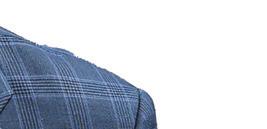





UTR Sports has launched new College Team Rankings to showcase the topranked college teams across Divisions I, II, III and NAIA.
UTR Sports says its College Team Rankings provide a data-driven approach to ranking the nation’s top men’s and women’s teams. The rankings factor into a team’s UTR Power 6, win-loss record and strength of schedule. The new rankings will be used for seeding at the UTR Sports NIT Championships, May 7-9, in Rome, Ga.
From the College Corner on UTRSports. net, anyone can view the new UTR Sports College Team Rankings in the “College Rankings” tab. Rankings will be updated weekly on Wednesdays.
Mary Stoiana, a senior at Texas A&M, and Colton Smith, a senior at Arizona, are the 2025 Universal Tennis Foundation Hurd Awards champions, receiving $100,000 grants to support their transitioning from college to international competition.


GoRaqt, the world’s first courtside smart kiosk designed to provide racquet sports players with instant access to premium equipment, has announced Dunlop as its inaugural tennis ball supplier.
GoRaqt’s kiosks are placed near tennis, pickleball and padel courts, enabling players to purchase items such as balls, as well as demo or rent premium racquets and paddles. With user-friendly touchscreen interfaces, contactless payment options, and UVdisinfection of equipment, GoRaqt says it can deliver convenience and safety to players at public courts, sports clubs, HOAs, hotels, resorts and camps.
A Dunlop-branded smart kiosk was on display at the 2025 Miami Open in March at Dunlop’s booth on the exhibitors’ floor. For more information, visit www.goraqt.com.



Groundbreaking tennis instructor and author John Yandell, the creator of tennisplayer.net 20 years ago, passed away Feb. 13 after a battle with cancer. He helped revolutionize tennis instruction through “Visual Tennis” and the “Hidden Game” of slow-motion video analysis.
The Sports & Fitness Industry Association has named Bonnie McLaughlin as Vice President, External Affairs & Industry Relations. She will oversee external affairs, industry relations, and communications and marketing. The SFIA also announced the promotion of Lisa Futterman to Senior Manager, Marketing and Communications.
The Washington Tennis & Education

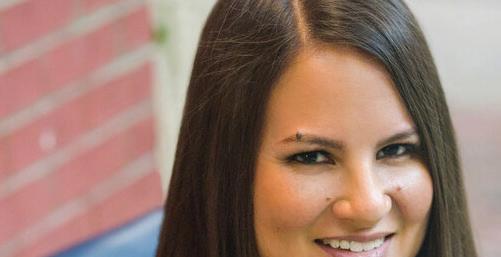

Foundation announced the appointment of Candace Smith as its new chief executive officer. Smith brings more than 15 years of experience in the D.C. education sector to the role.
Australian tennis player Thomas Fancutt has entered into a voluntary provisional suspension under the Tennis Anti-Doping Programme (TADP),

according to the International Tennis Integrity Agency (ITIA). The 30-year-old Fancutt, who reached a career-high world doubles ranking of 107 in December, has admitted to a breach relating to the use of a Prohibited Method. He is prohibited from playing in, coaching at, or attending specific tennis events.
After serving for several months as the Interim Executive Director for New HYTEs in New Haven, Conn., Stephanie Wratten has been appointed to the role on a permanent basis. She steps in for Scott Staniar, who continues his health care in California.
Former USTA Director of Communications Page Dahl Crosland passed away on Feb. 10 of pancreatic cancer. She was 84.




- Crushed basalt.
14-15 tons Together with the turf base is about 1 inch
- Caliclay Synthethic Turf 0 .4 inches
The turf is for stability and moisture retention
- Asphalt, concrete or 95% compacted soil with seal









The USTA Community Tennis Development Workshop is coming back! The popular conference for tennis providers will be held Feb. 19-21, 2026, at the Gaylord Texan resort in Dallas. The USTA Foundation Impact Conference will also take place at the same location, during the same dates.
The International Tennis Federation's World Tennis Number (WTN) rating will become one of the singles acceptance criteria for ITF World Tennis Tour events. The WTN will become the third measure of acceptance into tournaments, used after all players with a WTA/ATP Singles Ranking and an ITF World Tennis Ranking have been accepted. The WTN, developed by the global governing body in collabora-
tion with national associations, is a global rating system that forms a key part of the ITF’s digital strategy.
Tennis Europe is celebrating its 50th anniversary with a new look and new branding, with a vibrant aquamarine green main logo. The new look is complemented by new branding for the Tennis Europe Junior Tour—more than 500 international tournaments for players ages 12, 14 and 16 & Under, held annually in almost all of the 50 member nations.
The WTA and its global partner, PIF, have introduced the PIF WTA Maternity Fund Program, to provide eligible WTA players with the financial support and comprehensive resources to start or expand their families. Through the program, WTA players will, for the first time, receive paid maternity leave up to 12 months, and have access to grants for fertility treatments to build families, as well as other benefits. The program will offer benefits to more than 320 eligible WTA players.
Skincare brand La Roche-Posay partnered with the BNP Paribas Open as the Official Sunscreen Partner for the tournament, which took place March 2-16 in Indian Wells, Calif.












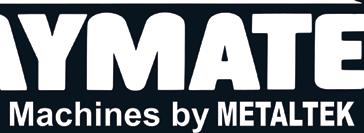


Mackie McDonald

The USTA Foundation, the charitable arm of the USTA, along with professional tennis player Mackenzie “Mackie” McDonald, have launched the USTA Foundation’s Mackie McDonald College Fund, a new initiative that will provide individual player grants to high school seniors who will continue their tennis careers at the collegiate level.
The fund will support studentathletes who progressed through the tennis-playing pathway via the USTA Foundation’s National Junior Tennis & Learning (NJTL) network, a nationwide group of more than 250 sports-based community organizations that use tennis as a tool to prepare young people from underserved communities for their futures.
McDonald, who has reached a career-high world No. 37 in the ATP singles rankings and No. 49 in ATP doubles rankings, had a stellar Division I collegiate career before turning pro. A native of Piedmont, Calif., he competed for the UCLA Bruins from 2014-16, earning All-America honors all three years and finishing his final season ranked No. 1 in singles and doubles.
John Feinstein
Acclaimed sportswriter John Feinstein passed away March 13 at age 69. Feinstein was a longtime Tennis magazine columnist and the author of the bestseller Hard Courts (1990), chronicling a year on the men’s and women’s pro tennis tours.
Among his nearly 50 books is the No. 1 best-seller A Season on the Brink (1986), about Indiana University men’s basketball and coach Bob Knight. Later in his career, Feinstein wrote several young adult mystery novels that took place in sports settings, including at the US Open.
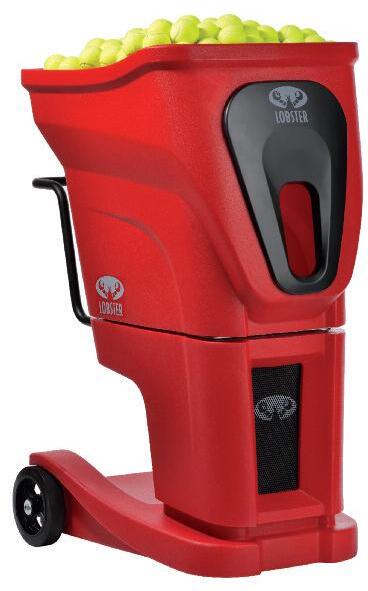
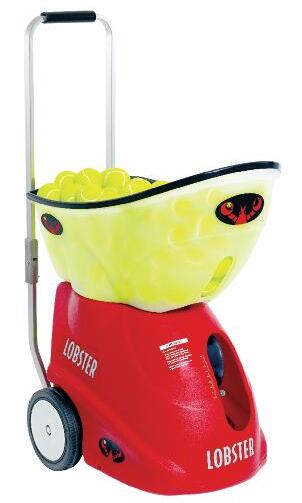



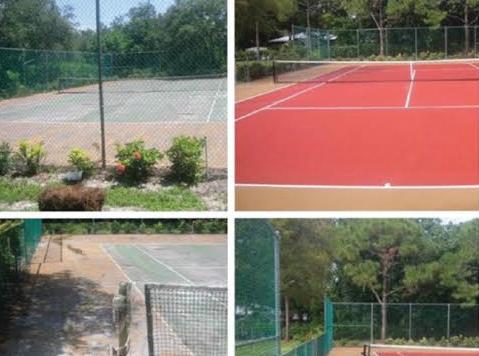



Diadem Sports has partnered with Elina Svitolina, who earlier this year debuted the Diadem Axis 98 racquet at the Australian Open, prior to the racquet hitting the market in February. The 17-time WTA singles champion and Olympic bronze medalist has joined Diadem as a brand ambassador and strategic business partner.
“Partnering with Elina both on and off the court presents an incredible opportunity to achieve shared goals and pursue excellence in tennis and business,” says AJ Bartlett, co-founder of Diadem Sports. “Elina’s dual role as both competitor and business partner
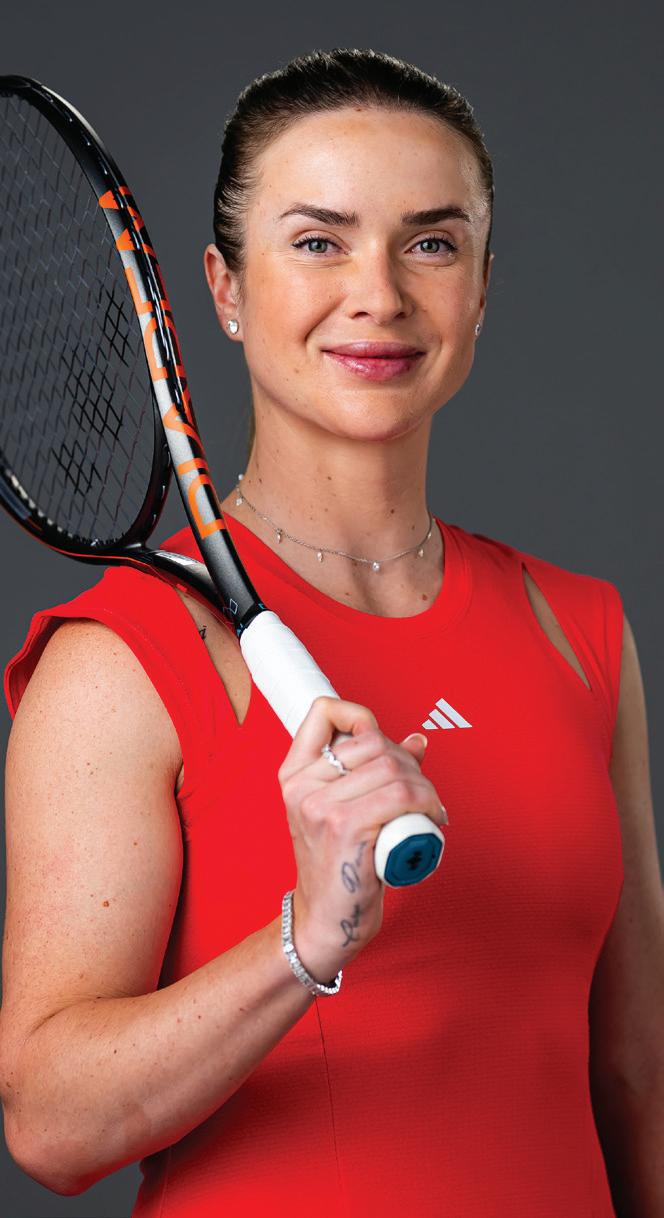
brings unique insights directly from elite competition into our product development process, strengthening the connection between performance and innovation.”
The Diadem Axis 98 racquet showcases Diadem’s FS3 (Flex Stabilization System) technology, featuring three carbon fiber ribs and strategic foam placement for enhanced stability. The design also incorporates the proprietary 3X Grommet system and Air Foil frame design, optimizing spin generation and swing speed, says the company. Diadem’s sports line also includes strings, Tour Series bags and Pro Feel Performance Overgrips. Visit diademsports.com for more information.






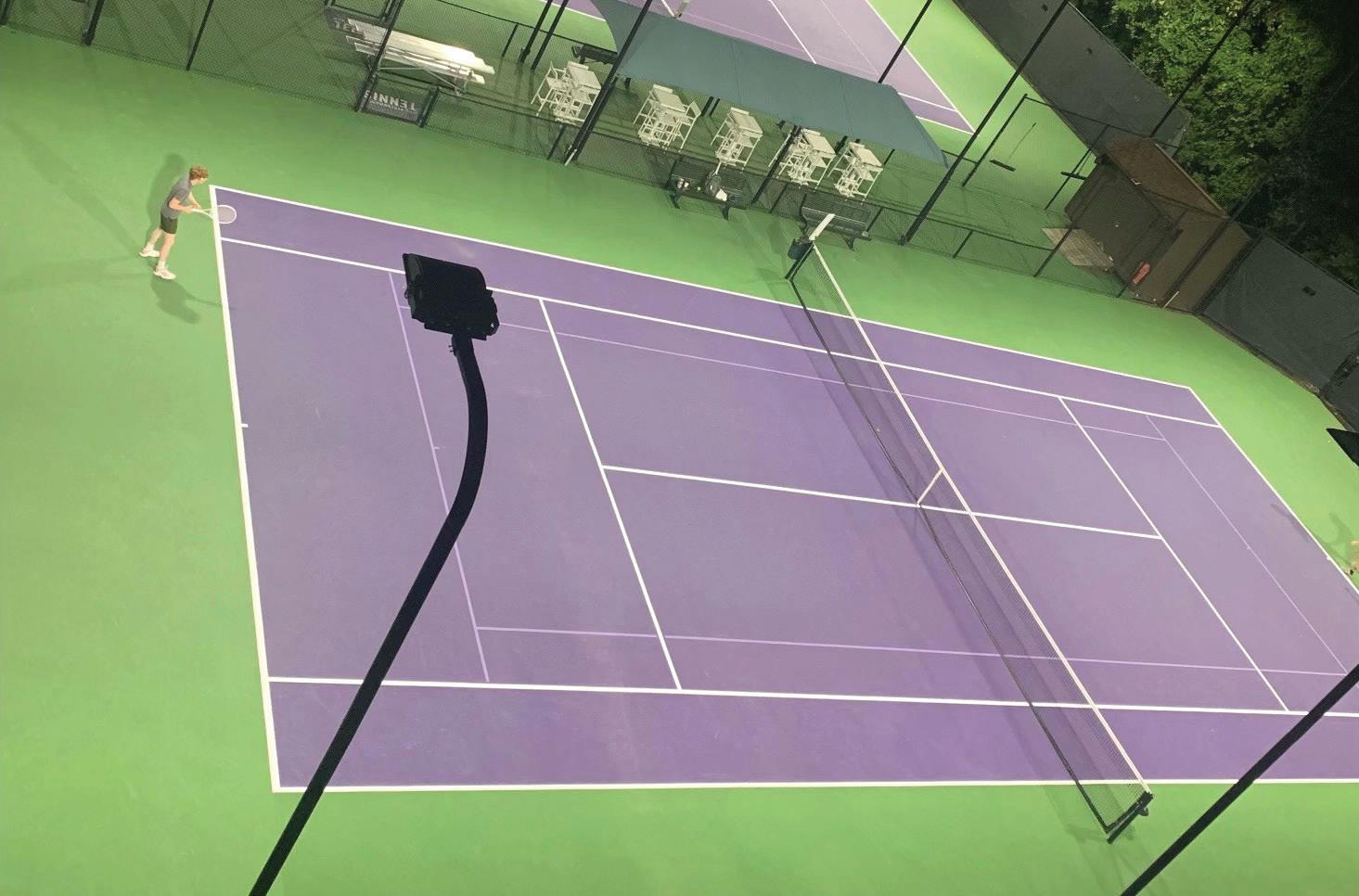
Advocacy for tennis is about making an impact in the little moments, too.
By Peg Connor
Advocacy—it can sound serious, intimidating, even complicated. Organized e orts, such as meeting with elected o cials to proclaim May as National Tennis Month or working with your Community Tennis Association to collaborate with the local Parks & Recreation Department on court renovations, are crucial activities that require time, e ort and organization.
But at its core, advocacy can be as simple and e ective as sparking a conversation.
I have a tennis ball bag tag on my backpack, and without fail, it sparks discussions while I travel. “Do you play tennis?” someone will ask, opening the door for me to share my love of the game and its many mental, physical and social benefits—and just as importantly, to help them take the next step in their own tennis journey.
On a recent trip, my Uber driver was wearing a Miami Open hat. What started as small talk about his favorite pro athletes turned into a discussion about where the tennis courts were located and how he could start playing recreationally in his community.
While visiting Disney World last year, I approached a man in a US Open T-shirt and asked if he was in Orlando for the USTA Annual Meeting, as I was. He wasn’t—he was simply on vacation with his family, all of whom were tennis players. I encouraged them to visit the USTA National Campus while in town, and before our chat ended, we were discussing the ways he could get involved in
volunteering back home.
These everyday moments remind me that advocacy isn’t just about big initiatives—it’s about making an impact in the little moments, too.
• See a parent and child struggling to play on a full-size court with yellow balls? Keep a stash of red low-compression balls in your bag and o er them a sleeve. A small gesture can make their time on the court more fun—and keep them coming back.
• Know a beginner struggling to find playing opportunities? Act as a matchmaker. Many people stop playing simply because they can’t find a partner or program. Help them connect with competitive but social events like Cardio Tennis Triples or Red Ball for All—inclusive formats designed to foster friendships and build community.
• Encourage young players to stay in the game after high school. Talk to them about trying out for college tennis, or joining a college Tennis on Campus program. And if they’re interested in coaching, help them find training and education opportunities. Sometimes, all they need is someone to believe in them and a sincere invitation to get involved.
Advocacy isn’t someone else’s job—it belongs to all of us. If those of us who already love tennis commit to small, consistent actions to help others take the next step in their tennis journey, the collective impact would be immense. Small e orts add up and could very well be the spark that inspires someone to become a lifelong player. And, honestly, it’s fun—I relish serving as a “tennis concierge” for all the tennis friends I meet along the way.
This May, during National Tennis Month, let’s all pledge to share the gift of tennis with others. It’s as simple as starting a conversation.
Contributing Editor Peg Connor’s roles in the tennis industry have included that of player, coach, instructor, volunteer and racquet sports executive.
We welcome opinions and comments. Email peter@acepublishinggroup.com.


The expanding padel ecosystem presents diverse opportunities for monetization and involvement.
By Marcos del Pilar
In the March issue of RSI, we discussed ways you can monetize the growing sport of padel, and we’d like to continue that conversation. Beyond the core business models, several other avenues exist for players, coaches, business people, entrepreneurs, investors and padel enthusiasts to become involved in a rapidly growing sport that can be highly profitable.
• Coaching: Qualified padel coaches are in high demand, as more people come into the game and seek skilled instructors. This can create a wealth of opportunities for aspiring coaches to build successful careers with high-income potential. Becoming a certified coach offers a rewarding career path with opportunities to teach players of all levels. If you already teach tennis and/or pickleball, add a padel certification to the mix.
• Facility/Club Owner: As padel’s popularity continues to rise, facility valuations are expected to rise, too, offering excellent long-term profitability and diverse exit strategies.
• Retail and Equipment Supply: Padel enthusiasts will require paddles, balls, apparel and accessories.
• Media and Content Creation: Creating engaging content related to padel can include writing for magazines, producing podcasts, creating YouTube channels with instructional videos or match analysis, and building online communities.
• Court Construction and Maintenance: With projections estimating up to 30,000 courts in the U.S. in the coming years, the demand for court
construction and maintenance will be substantial. Court and sports construction firms should look into the potential of adding padel court installation, construction and maintenance.
• Technology, Analytics and DataDriven Businesses: Platforms can connect players, facilitate court bookings, provide performance analytics and enhance the fan experience. With a rapidly growing and engaging community of players and fans, these types of businesses have a promising future, building consistent and recurring client relationships.
• Facility/Club Development
• Facility/Club Management
• Equipment Manufacturing and Distribution
• Event Management/Event Promotion/Tournament Operations
• Marketing and Sponsorship:
Connecting brands with the padel community through sponsorships and marketing campaigns is expected to be a burgeoning area.
• Professional Padel Player: For highly skilled, dedicated players, pursuing a professional career offers opportunities to earn prize money and secure sponsorships.
• Owner of a Professional Padel Team: Investing in and owning a team in a professional padel league presents a unique business opportunity. This involves managing team operations, marketing and generating revenue through sponsorships, ticket sales and merchandise.
• Broadcasting and Streaming: As padel grows, it will fuel an increase in demand for padel-related content. This creates exciting opportunities for broadcasting and streaming companies to engage audiences and monetize through various channels, including TV rights, online streaming subscriptions, advertising and even partnerships with sports betting platforms.


• Sponsorship Opportunities: Brands across diverse sectors have the chance to become key players in the North American padel scene. Sponsoring high-quality competitions and events provides valuable brand exposure and association with a dynamic and expanding sport. The potential for growth and profitability can be substantial for your business and career, but the true realization of padel’s potential may hinge on effective monetization strategies. As the sport grows in the U.S., it is expected to create a wealth of job and investment opportunities across various sectors. Consider getting into this developing area now.
Global padel consultant Marcos del Pilar is an RSPA Master Professional and padel consultant for the USTA. He is a former president of the U.S. Padel Association and was a cofounder and former CEO of the Pro Padel League. He also heads padel certification for the RSPA, with more than 800 certified coaches. Contact him at marcos@tenismrp.com.




The ZONE™ LED sports light features a sleek low profile design and high performance LEDs paired with precise silicone optics to produce superior levels of illumination, uniformity and cutoff. Available in two sizes and multiple lumen outputs for any court sport application. Optional wireless control systems available. Proudly made in America.


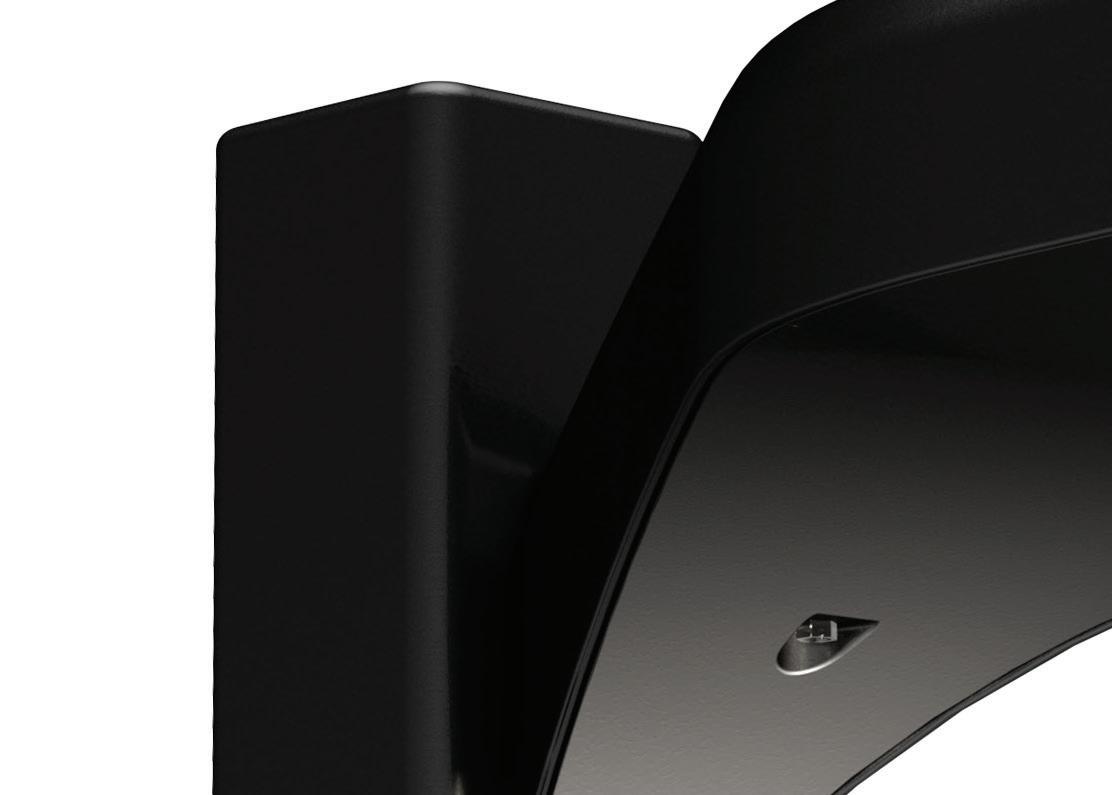






The ZONE™ LED sports light features a sleek low profile design and high performance LEDs paired with precise silicone optics to produce superior levels of illumination, uniformity and cutoff. Available in two sizes and multiple lumen outputs for any court sport application. Optional wireless control systems available. Proudly made in America. frasurereps.com







frasurereps.com
frasurereps.com
frasurereps.com



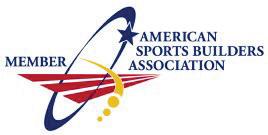
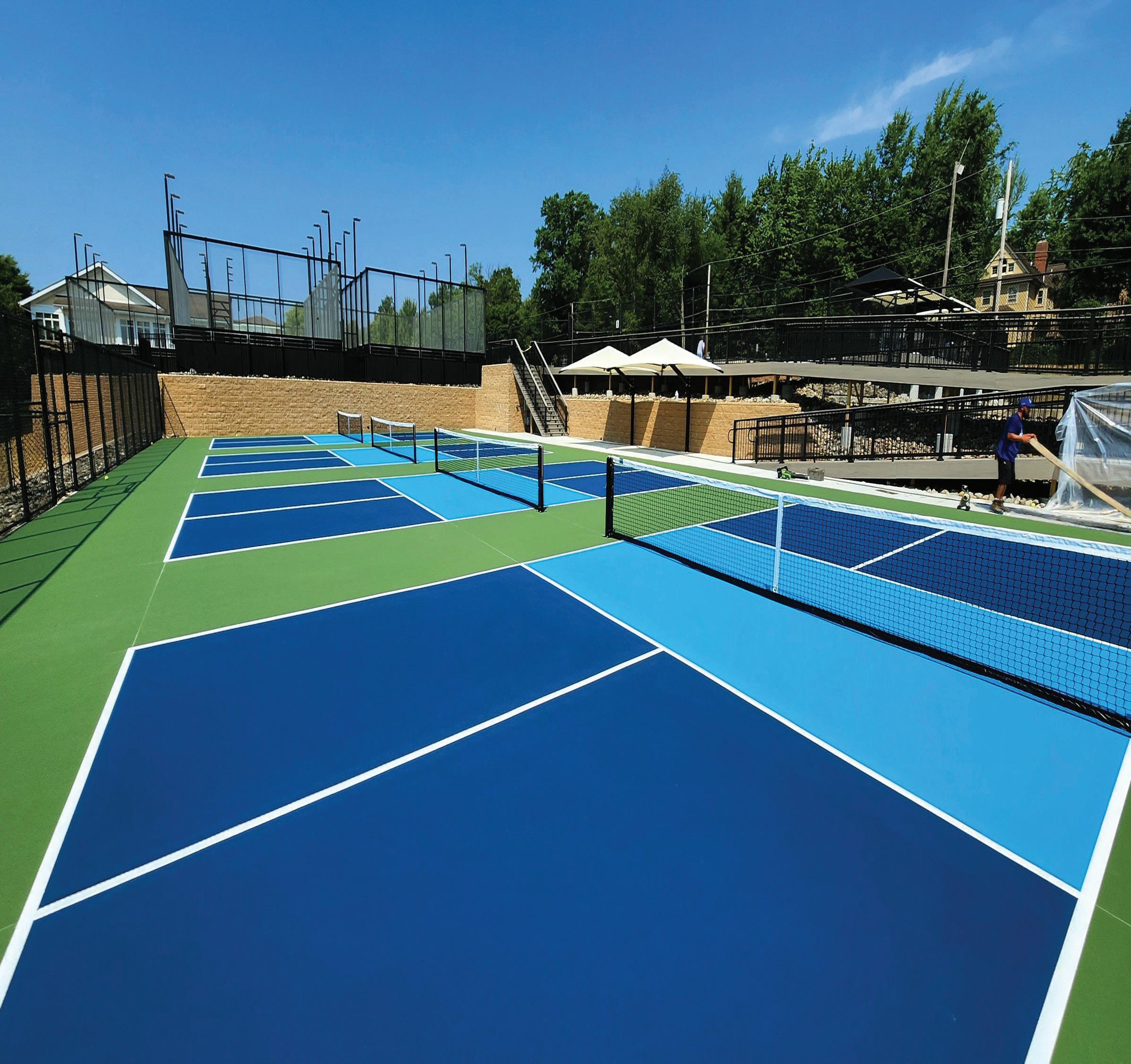
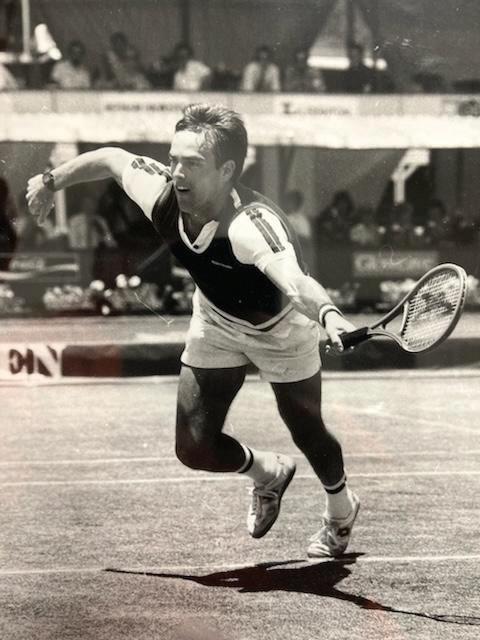
know that where there are humans, some drama is inevitable. It would be like hoping for a conflict-free world: “Hope for the best, but plan for the worst.” This popular phrase reminds us to take a balanced approach, maintaining a positive outlook while also preparing for the inevitability of life’s challenges and setbacks.
Let’s continue by dividing the guests/ customers we encounter into Friends, Frenemies and Enemies (hard-to-please).
We define what a friend means to each of us differently. A person may have 5,000 friends on Facebook, but only two or three people in addition to direct family that he/she considers a close friend.
A few quotes may help:
OF LIFE
In business, keep your friends close, and your challenges even closer.
By Joe Dinoffer
The quote, “Keep your friends close, but your enemies closer,” is credited to Sun Tzu, Chinese military general, philosopher, strategist and writer who lived around 2,500 years ago. He is recognized as the author of The Art of War, an ancient Chinese war strategy classic. Most think this proverb pertains only to political and military tactics, but it goes far beyond that.
Let’s contemplate this quote as an analogy to playing or working at a tennis, pickleball or multi-sport facility and unpack and identify both “friends” and “enemies”—hard-to-please individuals. We can easily recognize which people act friendly and are genuinely nice. But who or what constitutes an “enemy” or “adversary” in a place where “friendly” sports like tennis or pickleball are being played?
To understand this better, let’s start with the 80-20 rule. This says 80
percent of your members and players/ guests will be more passively involved in your facility, while 20 percent will be actively involved. This 80-20 rule places 80 percent in the middle of the spectrum, as they are relatively inactive and easy to please.
Of the 20 percent, about 10 percent of them are friendly and supportive, the kind of people that make work a great place to spend time! However, on the other side of the spectrum, the last 10 percent are more likely to be in the middle of some drama or complaint. The people themselves are not our enemies, but their behavior can be adversarial.
Whether these numbers fit your workplace or not, it should come as no surprise that friends and foes exist in almost every setting where humans are involved.
Let’s agree that while we might hope for a drama-free workplace, we also
• Muhammad Ali: “Friendship is the hardest thing in the world to explain. It’s not something you learn in school. But if you haven’t learned the meaning of friendship, you really haven’t learned anything.”
• Ralph Waldo Emerson: “The only reward of virtue is virtue; the only way to have a friend is to be one.”
• Helen Keller: “I would rather walk with a friend in the dark than walk alone in the light.”
A “frenemy” is a recent addition to our dictionary and refers to a person with whom we are friendly despite not being “friends,” i.e. you would invite to your home for dinner. It may sound surprising that this group constitutes 80 percent of the people at our facilities. Frenemies may not be actively supportive of your leadership by participating in your events or taking lessons, but remember that they can stir up some drama if they are not happy.
Pay attention to this “mostly silent majority.” Here’s one creative example of how to proactively be prepared to keep your customers or guests happy: As a director of tennis in one of the most prominent facilities in the U.S., Master Professional and legendary industry leader Fernando Velasco has a theory. His decades of experience taught him again and again that at least one person will be on edge and reveal their
shadow selves every day at clubs around the world. Whether it be ladies’ leagues or male weekend warriors, busy tennis and pickleball courts can catch on fire, like dry timber in a drought. What could cause someone to be on edge when they come to play tennis or pickleball? The next person you greet may have just had a fender bender, an argument at home, frustration at work, or an infinite number of other possibilities.
During busy times, Fernando would manage by wandering around his facility (MBWA) and would carry a few new cans of balls. If there was a problem on any court or with any individual, Fernando would give them a gift of new tennis balls. This simple tactic quickly cools down most heated arguments. It’s a small investment with huge rewards.
ENEMIES
Think about the word “enemy.” What does it mean? Legendary psychologist
Carl Jung divided human nature into higher selves and shadow selves. We all have good qualities that allow us to live in our higher or best selves. The challenge exists when we exhibit our darker or “shadow” selves.
The best piece of advice may be to remember to “hate the sin and not the sinner.” If it helps, think of it this way: The person themself is not creating the problem, but it is their behavior at a particular time, place and circumstance.
While a free can of new balls may cool down many challenging situations, there will also be some conflicts that require extra care and strong listening skills. What is the best advice in handling an upset customer? Change the environment by walking them to a more private place to speak. This can di use much of the tension. Remember, as much as possible, keep them walking while they are venting, as the rhythm of movement will also have a calming e ect.

So, how does “Keep your friends close, but your enemies closer” relate to club and sports facility management? Don’t we have to consider the intent and context of a person’s actions before labeling and condemning them as disruptive?
Pay a little extra attention to these sometimes “di cult” players and members, try to move them into your fan club, and your life working at any facility will be more joyful and satisfying than ever.
Joe Dino er is a 50-year industry veteran, Master Professional in both the RSPA and PTR, National RSPA Industry Excellence Award winner, and author of nine books, more than 20 DVDs and several hundred articles. He is also the Founder and President of OnCourt O Court, a 30-year company dedicated to serving tennis and pickleball with creative products to improve the lives and careers of players, coaches and facility managers.




After years of dealing with cracked and unsafe courts, a Minnesota high school turns around its failing grade.
By Judy Leand
For tennis enthusiasts, it’s disheartening to see desolate school tennis courts crisscrossed with fissures, reminiscent of earthquake fault lines. Sadder still is knowing that the disrepair will impact participation by prompting kids to gravitate to other sports and activities.
Such was the case with the Le Sueur-Henderson High School tennis courts, which reportedly had been a problem for a number of years—so much so that the deterioration prevented the school’s tennis teams from playing any home matches in the fall 2023. Located in Le Sueur, Minn., the school serves both the Le Sueur and Henderson communities.
But today, thanks to a big assist from USTA’s Tennis Venue Services—which provided technical assistance, project review, recommendations and funding—the high school’s eight tennis courts have been reconstructed, and four of the new courts have included lighting.
“Total reconstruction of our tennis courts had been needed for many years,” says Cassie Wilke, head tennis coach at the school. “After our local referendum passed to build a new elementary school near our existing courts, we decided it was the necessary time to begin the reconstruction process. Prior to the reconstruction, we were unable to host home matches at our high school varsity level due
to safety concerns. Luckily, we only had to deal with that for one year, but it was a struggle for our program to have proper practices and match opportunities due to the condition of our facility. Everyone was on board [and realized that] for the program to grow, reconstruction was needed sooner rather than later.”
Today, Wilke is happy to report that the courts are fully accessible to the community, hosting open play for anyone, of any age or skill level. In addition, “Our Physical Education programs at all levels also use the courts frequently. Over the past few years, our youth programming has really grown and we now offer three separate youth camps over the summer, as well as our Varsity, Junior Varsity and Middle School camps and summer tennis instruction.” There have been conversations about additional programming for the facility, and even hosting adult tournaments there.
Wilke is also quick to credit USTA Tennis Venue Services for the success of the project.
“They were a great resource to review our project plans and ensure that we were taking the necessary steps to have the best possible facility while also setting us up for financial help from USTA,” she notes.
The school district received $50,000 from USTA to invest in the reconstruction effort.
“The project was initiated in the fall of 2022—the courts
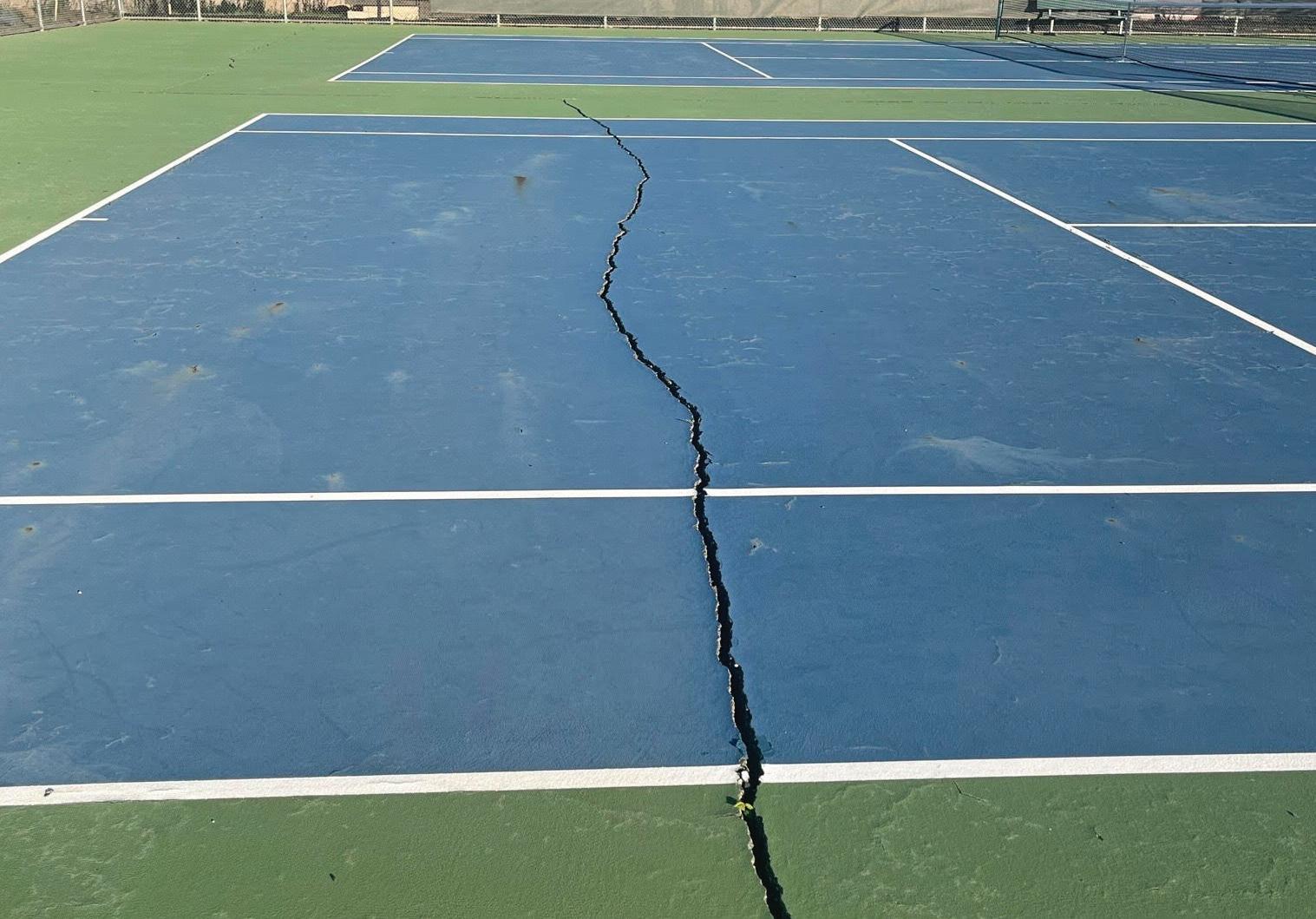

Whenever we have a new facility such as this, it becomes a welcoming and inviting environment to grow the game.
were at the point of becoming unplayable,” recalls Pat Colbert, USTA Northern’s Assistant Executive Director, Special Projects. “The reconstruction project came in just under $800,000 and funding came from the school district, USTA National and USTA Northern.”
“We were thrilled to be able to help Le Sueur-Henderson High School get this project over the goal line,” says Todd Carlson, Director of USTA Tennis Venue Services. “And now, with even more support from USTA National, including a substantial increase in the funds available,
we can help to improve tennis courts and facilities at more schools and parks across the country.”
“It was great to see this project come to fruition—it has given a new boost to the community,” Colbert adds. “Whenever we have a new facility such as this, it becomes a welcoming and inviting environment to grow the game.”
Sponsored content. For more on how the USTA’s Tennis Venue Services can help your facility or project, visit usta.com/facilities or email facilities@usta.com







With support from all areas, National Tennis Month is the perfect vehicle to drive the sport for a lifetime.
NATIONAL TENNIS MONTH
players to re-engage with the sport, and energize existing players to play more (and buy more). There’s a good chance, too, that NTM played a major part in this past year’s 8.3 percent participation increase to 25.7 million tennis players in the U.S., and to the increase in retention this sport has experienced.



> National Tennis Month started just four years ago as a way to o er tennis providers a natural—and national—platform to help grow the game in their communities, and to help highlight their businesses. That first month, May 2021, involved a lot of quick patchwork, but everything got up and running. And importantly, it was now on the calendar for the month of May for the future.







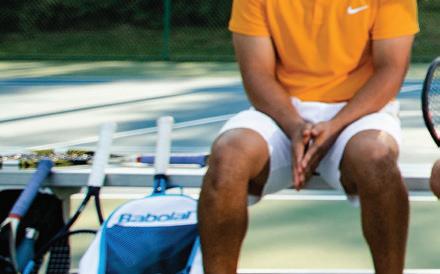



In the last four years, the USTA and other industry companies and groups, including USTA sections, have continued to devote more support and resources to National Tennis Month. NTM gives every tennis provider— teaching pros/coaches, facilities, park & recs, CTAs, NJTLs, retailers, manufacturers and more—an annual platform in which to bring new players into local programs, inspire lapsed






An important focus for NTM has always been on the “local” aspect of promoting the game. For the most part, programming and events are left up to whatever local tennis providers decide is best for their own communities.




Significantly, providers of all types can also tie their regular programming into National Tennis Month, benefitting locally from this nationwide promotion. USTA section and local sta and volunteers also have been leaning into NTM, running events, exhibitions and promotions in May. In fact, a number of sections o er grants for providers that run



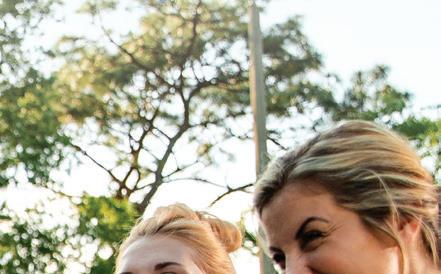













programs for NTM (check with your USTA section).
As interest in NTM has grown over the years, the USTA is tracking progress through registering events on Serve Tennis, and through reporting on local or state National Tennis Month proclamations that have been issued. This reporting, while not mandatory, has helped to show how the sport has been growing from year to year, and helps to state the case for continued support for this important annual initiative.
For tools and resources you can use to help promote NTM, and tennis in general, visit the recently updated USTA.com/NTM website. Tennis providers should click “Host an Event” to list their NTM events on a searchable database. Consumers can click “Find an Event” to narrow in on NTM happenings in their communities.
Among the resources for NTM are marketing and promotional material, NTM artwork, press releases and press release templates, much of which is customizable.
One of the most popular resources on the USTA.com/NTM site have been the “proclamation” templates that providers can download, customize and submit online for states, communities or even schools to declare May as National Tennis Month. Having a local or state proclamation is a great way to generate publicity and interest in tennis. (While there was no central tracking system for NTM proclamations, anecdotal evidence appears to indicate that last year, well over 100 were issues around the country.) The website also has links to submit a proclamation or an NTM success story to win a USTA prize pack. (See the website for details and official rules.)
On May 10, there will be a “Hit to Be Fit” event at the USTA National Campus in Orlando and at 300 satellite


locations around the country, which will feature Cardio Tennis Triples and an adult Red Ball activation. Visit the website for more information on hosting or attending a Hit to be Fit event (and see page 7 of this issue of RSI).
More and more top businesses are stepping up to help support National Tennis Month, including Fage yogurt, which is a key US Open sponsor. This year, Fage will run a US Open sweepstakes to win a pair of tickets to their luxury suite at the Open, which includes airfare and hotel (see usta. com/NTM for official rules). The company also will launch a tennis-inspired recipe just for NTM, in addition to using its presence on social media and in the marketplace to boost awareness.
That’s not all. NTM has dozens of promotional partners, including top retailers who are using NTM to help drive business and interest in tennis, such as Dick’s Sporting Goods, Tennis Warehouse, Midwest Racquet Sports, Tennis Express, Tennis Plaza in Florida and Game, Set, Match in Colorado and Las Vegas—all tying into


NTM to help support the sport.
USTA Connect Partners such as Recycleballs and Court Reserve also are on board, as are major tennis, sports and fitness clubs including Midtown, Cliff Drysdale Tennis/Peter Burwash International, Invited, Genesis, Sportime, Lifetime and Bay Clubs. Key industry partners supporting NTM include Tennis Industry United, Head, Wilson, Babolat, Dunlop, ITA, ATA and NRPA, along with the educational website GoNoodle.
“There really is something for everyone, so retailers, brands, providers and ultimately consumers all win,” notes Mickey Maule, USTA managing director for Industry & Sales.
“National Tennis Month is a fantastic opportunity for anyone to come out and see all the tennis community has to offer,” says Elliott Pettit, the USTA’s senior director of Retention & Brand.
“We hope it can serve as a connector to attract new players, inspire our current players and strengthen ties locally where the game is played.
“More than anything, we just want people to get out and enjoy the world's healthiest sport!”
Resources for coaches, facilities, Park & Recs, Community Tennis Associations, NJTLs, and providers of all kinds are available on USTA.com/NTM. Here are some of the tools you’ll find:
• Host an Event: Providers can create and post their events for consumers.
• Find an Event: Consumers can put in their location and find NTM events in their area.
• “Hit to be Fit”: This May 10 event will feature Cardio Tennis Triples and an adult Red
Ball activation. Host an event in your area.
• Marketing Material: Customizable marketing material, which includes social media posts, fliers, posters, postcards and yard signs.
• Artwork: Downloadable, turn-key artwork such as banners, T-shirts and car magnets. Includes access to the NTM logo and email signature graphic.
• Proclamations: Sample proclamations for states, city councils, mayors and schools to proclaim May as National Tennis Month.
• Sample press releases: You can customize these for your local community, along with tips for reaching out to local media.
• Programming and Promotional Ideas: Download guides that provide marketing best practices and promotional ideas for NTM (and any time of year), along with suggested social

media posts. The promotional ideas guide includes dozens of tips developed by USTA National Committees to help grow the game in all areas.




























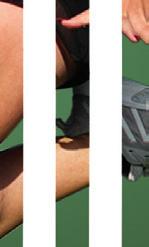


































In the heat of competition, these sunglasses and suncreens can help make sure your players stay protected.
By Kent Oswald
> The sun is not always the best friend of tennis and pickleball enthusiasts, and not just because it throws o your serve. Unprotected exposure can damage eyes and skin. Seeing both mission and market, eyeglass and skin care companies are developing technically sophisticated, protective and cosmetically attractive products to help your players stay on court.
The Vision Council’s 2024 “Focused inSights Sports Sunglasses” report o ers a sense of the market at large: About 1 in 10 consumers reported
owning sport sunglasses; 35 percent of millennials are likely to own sports sunglasses, followed by 31 percent of Gen Zers, and about one-third of respondents to their survey indicated an interest in purchasing sport sunglasses this year.
While the Vision Council (thevisioncouncil.org) did not ask about all racquet sports specifically, it found that among tennis players, 3 percent owned one pair of sports sunglasses and 24 percent said they owned multiple shaded specs; among this group, 41
percent had prescription lenses in their sunglasses. The Association’s Safety Eyewear report notes that 9 percent of those who wear sports protective eyewear do so playing tennis, and 4 percent have them on for pickleball.
The number of people taking their eye protection seriously is increasing, but the stats show how far the market is from being fully developed.
Similarly, more e ort is needed to get the word out about protecting the skin. The American Academy of Dermatology (aad.org) suggests wearing sunscreens that advertise a sun protection factor (SPF) of 30 or higher. The Skin Cancer Foundation (skincancer. org) recommends making sunscreen “an important part of a complete sun protection strategy,” safeguarding against wrinkles, saggy skin and age spots, as well as skin cancer. Their recommendation for outdoor sports is to apply it 30 minutes before heading outside—and even on overcast days— then reapply every two hours and immediately after heavy sweating.
Of course, to feel good, you want to look good. That combination of goodlooking and good for you in protection from the sun’s harmful rays is highlighted with the products below.
BRIOTI.COM
The Velox ($220), debuting this summer in multiple colorways, provides enhanced visibility and robust eye protection. The anti-fogging, nonpolarized lenses deliver true depth perception, while color-boosting tech enhances visibility for the neon yellow/ green range of balls. The glasses o er UV400 protection against the sun’s rays and minimize eye fatigue. The light frame is a secure fit, impact-resistant and built for easy lens exchange.

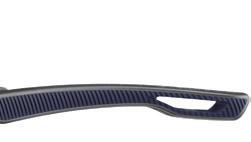





















The Victus Pro ($180 polarized; $140 non-polarized) frames made of 45 percent bio-based material are created specifically for tennis and pickleball enthusiasts as the latest addition to the line of multi-sport performance sunglasses. The color-enhanced dual lens specs improve depth perception in a lightweight, ventilated half-rim frame created to maximize comfort and stability. The glasses o er 100 percent UV protection.













The Sphaera Slash ($221-$281) with its striking silhouette is lightweight but rugged, featuring front ventilation, and its design takes into account details including comfort when worn with a cap. The prescription-ready lens tech is prepped for play in bright sunlight and provides augmented color and contrast, with a bend that o ers outstanding protection and an expansive field of view.







Aerocraft ($179-$209) is the company’s latest series of sports performance eyewear, with lightweight frames made of high-impact polycarbonate. The interchangeable shatter- and scratch-resistant lenses are available in multiple colorways and with di erent light filter options. All lenses repel water, dirt and oil, provide 100 percent UV protection and are engineered to provide full-field view and protection.



The lightweight Vantage ($199) frame maximizes light leakage with an Italian-made, semi-rim profile. The full-rim, semi-round Nova ($189) o ers a modern take on classic sunglass style. Both TR-90 frames are made in Italy, have adjustable temple tips and nose pieces, and feature prescription-ready Zeiss lenses designed to optimize depth perception by enhancing yellow tones. The non-polarized lenses allow for robust depth perception and deliver 100 percent UV400 protection.

Partnering with both the PTR and PPR, Rudy Project o ers two new options for 2025: the Turbolence ($229-$309, depending on lens options) with its removable foam interface to absorb and redirect sweat, and the Astral Sphere ($230), available with photochromic and polarized lens options and in larger and smaller sizes. Classics in the line include the shield-lensed Cutline ($285) and the exceptionally adaptable Rydon ($229-$285). All are made with sustainable bio-plastic.

Vogel XC ($40) is newly launched and designed for pickleball players who want maximum protection without an outsized shield. The lightweight frames are vented (to prevent fogging), shatterproof polycarbonate lenses with 100 percent UVA/UVB protection and are available in multiple colorways, including clear for protection indoors and under the lights. Tennis players will be drawn to the stylish Swank ($30) sports sunglasses. The prescription-ready lenses are scratch-resistant.
























































































































































































































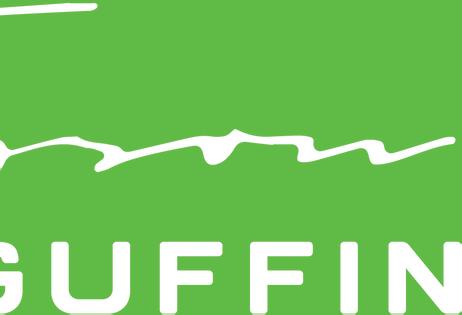





Lightweight, shatterproof Specs ($18.95) with UV 400-coated polycarbonate lenses and black nylon frames are available in three lens options. The blue tint and iridium selections are vision-enhancing on the brightest of days, while the clear lens option (with a prescription adapter for corrective lenses) o ers eye protection for indoor play and overcast conditions.
The o cial sunscreen partner for the US Open, BNP Paribas Open and Miami Open, the company’s Anthelios line provides broadspectrum care against UVA/UVB rays and layers antioxidants for skin protection from free radicals. All are lightweight and consistent in their application and well-suited to all skin tones with no white cast, staining or dripping into the eyes. The line’s newest product is the dermatologist- and pediatrician-tested Anthelios 50 UV Pro Sport ($33/6.76 oz.) with a breathable, non-greasy texture and high-endurance, water-resistant sun protection. Also of note are the oxybenzone- and octinoxate-free Anthelios 50 UV Clear and Anthelios 50 UV Tone ($40/1.7 oz.)— the former features azelic acid to leave skin clear, and provides a near-transparent look for all skin tones and types that smooths and protects with long-lasting hydration and superior sun protection. The latter evens skin tones with niaciniamide, leaving all skin types clear with no white cast and a sun-bronzed glow, while protecting against the risks of cancer and signs of aging.













> DOWNLOAD THE APP TODAY
Subscribe directly and get premium access to the flagship 24-hour network.
SOLRX.COM
Developed to meet the needs of triathletes and their eight-hour stints combining running, swimming and riding, the SolRX line can be counted on to provide excellent (and non-invasive) protection for racquet sports play. All products are oxybenzoneand octinoxate-free. Mineral SPF 50 Zinc Sunscreen ($24/3.4 oz.) blocks UVA and UVB rays not by being absorbed into the skin, but by sitting atop the skin in a matte-like finish that reflects the sun’s rays—and will not run when you sweat. Sport SPF 50 Sunscreen ($16/3.4 oz.) is anti-aging, fragrance-free and non-nano, and features a proprietary waterblock formula to stand up against sweat while not clogging pores.
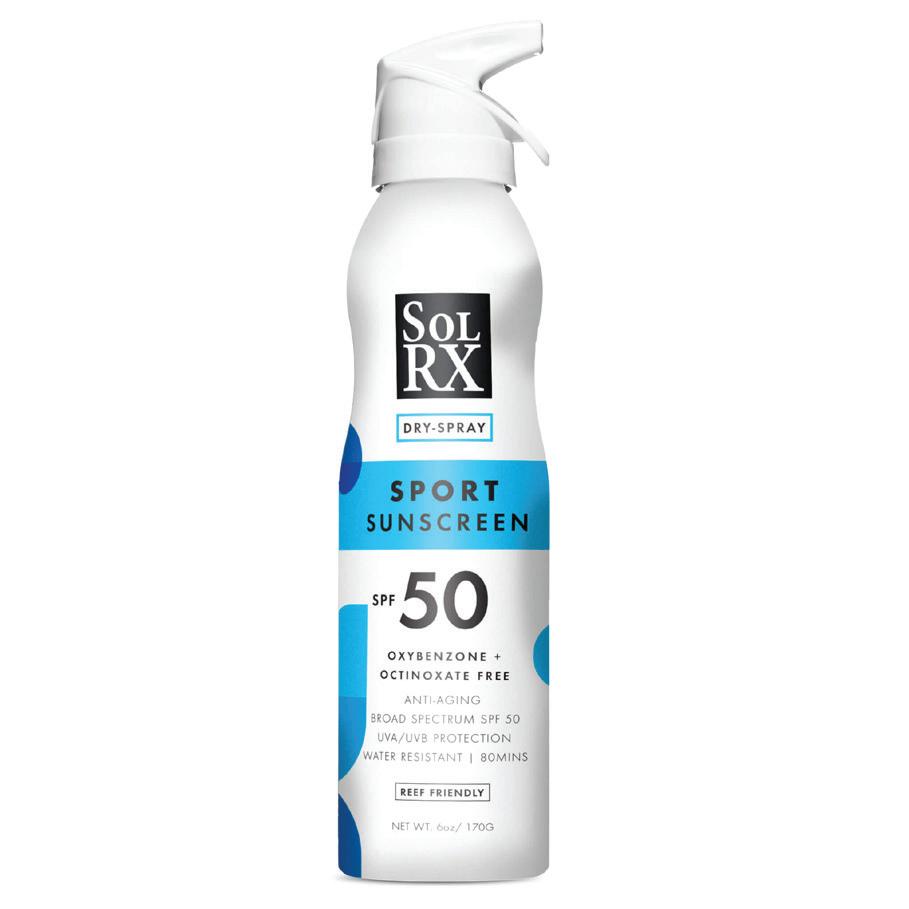
TEAMZEALIOS.COM
Sport Performance SPF 50 ($17.50/3 oz. tube; $146/32 oz. pump bottle and refillable travel bottle) delivers broad-spectrum protection (filtering 98 percent of UVA/UVB rays) and includes 9 percent non-nano zinc oxide. The Sport Performance Reef Safe SPF 30 ($17.50/3 oz. tube; $146/32 oz. pump) has ingredients including 20 percent non-nano zinc oxide, kale leaf extract and moringa seed oil to strengthen, calm and reduce skin inflammation, and does not contain oxybenzone, octinoxate, avobenzone, octisalate or octocrylene. The Sport Performance +Hydration SPF 50 ($12.50/3 oz.; $106/32 oz pump) delivers superior hydration in an all-day formulation. All three filter 98 percent of UVA/UVB rays.

Recipient of PTR’s Professional of the Year Award!

Kim Bastable has spent over 50 years in tennis as a player and coach, earning NCAA All-America honors at the University of Florida. She now leads UF’s Professional Racquets Management Program, growing it to 170 students and 65 graduates. She specializes in Positive Coaching and has over 30 years as a certified pro with RSPA and PTR.




Vinnie Barros
Jeremy Carl
Eric Engelsgjerd
Alexander Hager
Renee Hand
Matthew Johnson
Kristine Kraujina
Jan Lucky
Michael Nott
Michael Pereira
Jay Pinho
Dan Randall
Paul Reber
Julian Wortelboer
Ajay Pant
Matias Marin
Shashank Nautiyal
Jonathan Janda
Lucas Parrau
Butch Staples



Paul McGowan
Tyler Delaney
Andrew Schadt
Zenda Griebenow
DIRECTOR
Nate Engler
Davor Dekaris
Marcos del Pilar
Matias Islas
Simon Gale
Chip Fazio
Rares Ispas
Mike Woody
Steven Host
Scott Monahan
David Colby
Victoria Cran
Kent Chalmers
Andreas Hengstberger
Jo Schneeweiss Keene
Kainoa Rosa
Donald Felich
Brandon Frazier
Alyson Smith
Geoff Jagdfeld
Cole Heule
Spencer Newman
Luke Whiteside
Val Goncalves


Daniel Yun
Hernan Hatem
Roger Anderson
Brock Orlowski
David Beck
Ritesh Nautiyal
Chad Ruthig
Taylor Newman
Amy (Jing) Nestle
David (Skip) Span
Dan Batchelor
Mike Rahaley
Dan Beedle
Dale Evans
Seth Redelheim
Emma Cioffi
Thomas Whitten
Angie Wong
Anastasia Rodionova
See the course: Scan here!



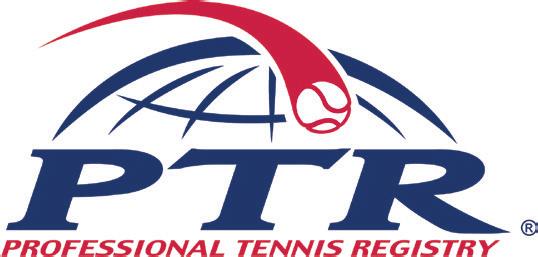






Have the right racquet inventory for your shop, and you’ll be sure to satisfy your players.
By Bob Patterson
Director, USRSA
> Selling racquets these days can be daunting. So many choices! There is a theory that a consumer given too many options will simply be overwhelmed and not buy anything at all. Certainly, with the number of racquet models on the market these days, you can’t possibly stock them all. But how do you choose?
As we move into summer, let’s toss out a baseball metaphor and simply say, cover your bases! Whether you have a large store or a very small pro shop, your space is limited—not to mention the bandwidth of your customers’ com-
prehension to choose. Having the right selection is paramount to successful sales and happy customers.
You’ll have to determine the size of your inventory based on things unique to your own situation. How much wall space do you have? What is your budget? Who are your customers? These fundamental questions will at least determine a starting point.
Take a critical look at your racquet sales history. If you’ve had good sales the last few years, then look at why. Know what’s working and look at models that underperformed. You not only want to
keep the sales up, but hopefully, continue to grow. If sales were less than optimal, then look at possible reasons why.
It’s easy to look for excuses: “I don’t have enough space to carry many racquets.” “My customers buy racquets online.” Rather than look for excuses, look for opportunities.
Whether your racquet wall has six models or 60, try to make sure they are all what your customers need. Keep duplications to a minimum, especially if your selection is small. Start with the demographics of your customer base. If your customers are primarily juniors, you’ll want to skew your selection toward them, but don’t overlook potential customers, too. Narrowing your selection too much can be a self-fulfilling prophecy.
Having a diverse inventory, no matter the size, will ensure that you have a frame for almost every player and won’t miss sales. Taking the time to understand the customer’s needs and fitting that player with a proper racquet will not only close the sale, but keep that customer loyal and telling others about your great service.
An excellent place to start is the Racquet Selector Tool, available to USRSA members at RacquetTech.com. On page 40, we list 81 frames that have been added to the USRSA database since last spring, but you can see all the current models online at RacquetTech.com—and even view the specs of past models to help find that perfect replacement.
UNDERSTANDING THE SPECS
1. HEAD SIZE: Square-inch measurement of the hitting surface (strung area).
2. LENGTH: Length of the frame from the butt of the handle to the top of the hoop.
3. WEIGHT: Overall weight of the STRUNG racquet, listed in both ounces and grams.
4. BALANCE: Measurement from the butt end of the racquet to the “Balance Point,” measured in centimeters.
5. FLEX: Measurement of the strung racquet’s stiffness using the Babolat Racquet Diagnostic Center (RDC).
6. SWING WEIGHT: The dynamic inertia of the strung racquet measuring the distribution of mass along the length, in kg x cm2.
7. POWER FORMULA: Determined by an algorithm in the USRSA Database using key specs that contribute to power of the strung racquet: Length, Head Size, Flex and Swing Weight.
(Textreme, Zylon & ATS)
(Textreme, Zylon & ATS)
(Textreme, Zylon & ATS)
(Textreme, Zylon & ATS)
(Textreme, Zylon & ATS)

Q: I have two questions that are similar, but different. 1) A tennis racquet is restrung. Should the racquet ever break soon after the restring? And 2) A tennis racquet is used by an advanced competitive player for four-plus years and subjected to 100 to 150 restringings during that time. Should this racquet ever break after being restrung?
I had a heavily used and often restrung racquet break shortly after it was strung and hit with for a short time. I had replaced the grommets due to wear, and the frame had been hit on the court surface while played with. So the racquet had wear and tear on it.
But I'm also wondering if this might have been caused by a slight design flaw in the model. When looking at eBay for this same model, I saw several being sold that had small cracks at 10 and 2 o'clock.
A: The quick answer to the first question is no, the racquet shouldn’t break soon after it’s restrung. But if it does, the answer as to why may be found with some investigation.
Questions to ask are: Was the racquet mounted properly in the machine? This would be the most likely cause, because if the frame is not supported correctly during the process, it can break. Often, though, the frame is strong enough to not break during the stringing process itself, but the graphite matrix of fibers may have been compromised and will
either break when removed from the vise or soon thereafter.
A good practice is to always take a close look at the frame shape both before and after stringing. The shape shouldn’t change more than a millimeter or two during the process. A significant change is a sign that the frame was stressed either in the process or was already fatigued or weakened prior to the restring.
Another reason would simply be a defective frame. In my decades in this industry, I can remember three cases where manufacturers had a “bad batch” of racquets make it through quality control and into the marketplace. It is rare, but it does happen. Usually, a check with the manufacturer will tell you if they are aware of any issues with a particular frame, as they will want to get those off the market and replace them quickly. (Also, be aware that lower quality, counterfeit frames might be out there, especially with online auction and resale sites.)
As for your second question, this would be more expected. Often a visual inspection of the frame shows no sign of a problem, other than, as you say, normal wear and tear. But a frame that is four years old can be considered “at risk,” and that risk is highly elevated if it is used by an advanced player.
A good player will be playing more often and striking the ball much harder than an average player, putting more stress on the racquet. Compound that with frequent restringing, which puts more stress on the frame than play in most cases, and you have a recipe for a “worn out” frame. As I said, there may be no visible signs to warn of the
frame’s fatigue, but it still could be compromised.
Also, look for signs of wear on the frame, especially when changing grommet strips. Wipe the frame down and take a close look at the drill holes. Are they enlarged or misshapen? Is there paint missing from the frame due to court scrapes? Look for any other signs that the frame is damaged in any other manner.
Other things to consider: Carbon fibers are very strong, and they rarely break unless struck with an immovable force (such as a net post). However, those carbon fibers are super thin, often smaller than a human hair. In a racquet layup, these fibers are arranged to maximize the design so that flex or stiffness occurs where the designer wants it. These thousands of incredibly strong, tiny fibers are held together with resin (glue) to make the frame. While the carbon fibers are incredibly resilient and strong, the resin can age and wear. Think about the frame flexing on every hit and with every pull of the string during the stringing process. That resin takes a beating and can begin to break down.
This is why professional players use a new set of racquets frequently.
We welcome your questions. Email them to bob@racquettech.com.




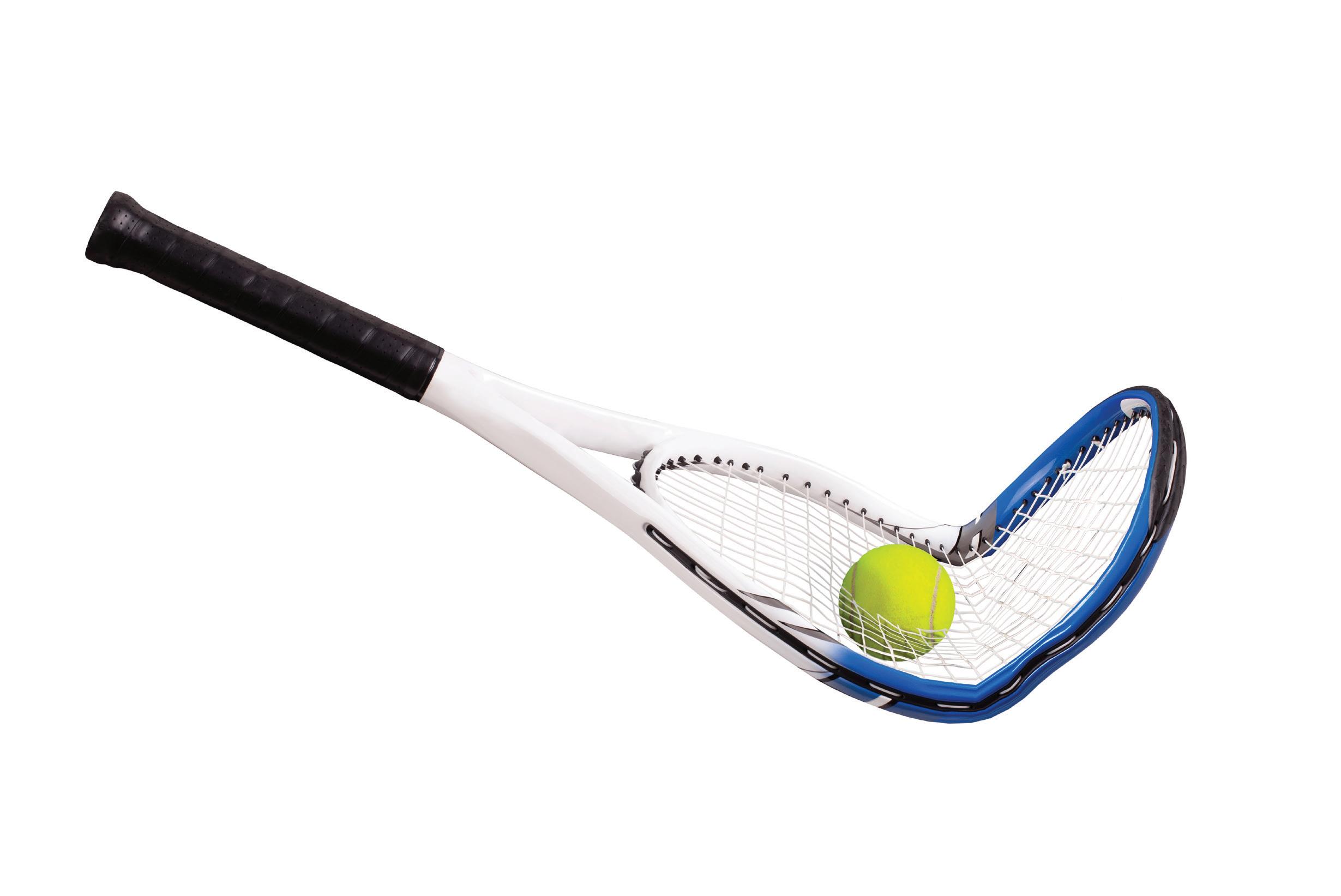








The changing world of intercollegiate sports can spell trouble for all of us.
By David Mullins, CEO, ITA

College sports have enjoyed a long period of growth and relative stability, but now there is no denying that sports like tennis are facing unprecedented challenges in today’s shifting world of intercollegiate athletics.
With the rise of “Name, Image, and Likeness” allowing for million-dollar “amateur” back-up quarterbacks, NCAA lawsuits, and conference realignments, Olympic sports are at risk of being overshadowed. It’s crucial that we consider the potential impact on the tennis industry if college tennis were to be severely impacted by the continued professionalization of college football and basketball.
For many young players, college tennis is a significant goal. It keeps them engaged in the sport longer and motivates families to invest in their development. But what happens if this opportunity disappears? The effects would be far-reaching, impacting ten-
nis lessons, equipment sales, tournament registrations and more. Many rural communities across the country rely on college tennis programs to maintain courts and qualified coaches. Without these programs, tennis facilities will be lost.
Tennis federations currently depend on college programs for much of their player development, particularly for top players not yet ready for the professional tours. Without college tennis, where would these players go for training? Furthermore, who would train the next generation of U.S. tennis coaches if they didn’t first experience college tennis themselves? These universities contribute millions of dollars each year to the sport.
At this critical juncture, it’s vital for everyone in the industry to come together and explore opportunities to preserve and strengthen college tennis.
So, how can we do this?
• Reach Out to College Coaches: Offer support to coaches, particularly those new to their positions. Help them navigate their communities, introduce them to alumni.
• Share Fundraising Ideas: Many college programs may not be familiar with the resources available in the tennis industry, including grants from organizations like the USTA.
• Attend College Matches: Boost visibility and morale, and support local college teams by attending matches. This encourages fans and builds excitement around college tennis.
• Follow and Promote College Tennis: Engage with the sport through social media and websites. Supporting teams online will increase awareness.
• Donate Products: Donating products or offering discounts to college programs can ease financial challenges.
• Host Fundraising Events: Organize fundraising events or tournaments to raise awareness and money.
• Make a Donation: If you’ve played college tennis, consider donating to your alma mater’s program. Anything can make a difference.
The ITA and USTA are committed to advocating for college tennis through every available channel. We will continue working to provide support and explore new opportunities for college programs. As tennis professionals, every action you take locally can have a significant impact.
Thank you for supporting college tennis. Future generations of players will be forever grateful.
After five years with the Intercollegiate Tennis Association (ITA), David Mullins was promoted to CEO this past January. He played at Fresno State and went on to coach college tennis for 12 years at DePaul, Northwestern and Oklahoma. Beyond his coaching career, he has contributed to the tennis industry in various capacities, both in the U.S. and in his home country of Ireland, where he represented his nation in Davis Cup play.
We welcome opinions and comments. Email peter@acepublishinggroup.com.



A HIRE CALLING
A BRIGHT FUTURE FOR OUR MEMBERS
SOCIAL TENNIS
RSPA PROUD
PROFESSIONAL COURTESY EXPECTATIONS
CERTIFICATION CALENDAR
LOSING FRED STOLLE MAKES
TENNIS A LESSER PLACE
JAMMIN’ WITH JIM
At the Racquet Sports Professionals Association, we are—and always will be—a members-first organization.
Every day, we discuss how we can help you grow, support your development, elevate your career, help you earn more and set you up for lasting success. This month’s issue is all about member appreciation. And I want to say this clearly and sincerely: thank you.
Thank you for being leaders. Thank you for lifting others up. Thank you for giving your time, talent, and energy to this association. Thank you to our Board of Directors for your dedication to our mission.
To our division leaders and executive directors—thank you for your daily commitment to serving our members.
To our past national presidents— thank you for building the foundation we continue to grow from. To our Hall of Famers—thank you for inspiring us with your lifelong service. To our critics— thank you for challenging us to be better. And to everyone I may have missed— thank you for your passion for racquet sports, and for your drive to share your knowledge with players, students, clients and peers. You are the reason the RSPA exists.
Alongside member appreciation, we’re proud to declare May as Career Month at the RSPA One of the most consistent themes I hear from members is about career growth—and our mission is to elevate careers in racquet sports with a certified professional on every court, inspiring people in every sport.
If you’ve heard me speak recently, you’ve heard our roles as racquet sports professionals must be seen as serious, meaningful career paths. We’re not just coaches, we’re leaders, educators, mentors, and innovators.
That’s why this May, we’re launching a free, four-part webinar series—one each week in partnership with our
friends at the McMahon Group (and longtime RSPA members). Each session is built to boost your career, with topics including Setting Goals & Creating Your Online Profile, Job Discovery & Preparation, The Difference Factor, Preparing for the Interview and Closing the Deal. Plus, we’ve included some great incentives if you complete the full series!
This year has been full of movement: major tournaments, trade shows, division events and more. Racquet sports are growing and the energy is electric. Tennis is our core and it remains the foundation of our industry. But let’s not get complacent. Keep reimagining your tennis programming. Look at what other racquet sports are doing and bring fresh ideas back to the court.
Pickleball participation booms and its business model evolves. As an entry point into racquet sports, it’s a powerful tool in our fight against inactivity, obesity and screen time. Padel is rising fast. Manufacturers are planning to build over 1,000 new courts in 2025 alone. We need certified professionals to meet the demand. Squash and platform tennis are gaining from the rising tide. And with the 2028 Olympics approaching, squash is gaining new visibility and momentum.
At the center of all of this? You. Keep listening. Keep learning. Keep adapting. When you serve your community with intention and innovation, you lead the industry forward.
With all this growth comes competition—for talent, for courts, for members, for attention. And that’s good. Competition forces us to sharpen our message, deliver more value and stay true to our mission.
So, why is the RSPA uniquely positioned to lead?
We are the only organization uniting tennis, pick-
Brian Dillman | RSPA CEO

leball, padel, squash and platform tennis under a single membership. With expert coach developers, trusted certification and support at every stage of your career, we have remained the gold standard for 98 years in an industry we invented. We understand what it truly means to build a career, not just a job—in racquet sports.
We’re promoting the RSPA brand like never before. That means more visibility, more credibility and more opportunity for you. We’re expanding globally. We’re growing our partnerships. And we’re working every day to make sure the value of your certification continues to rise.
I wake up every day grateful—and motivated—by the possibilities in front of us. But I also know we have work to do improving our communication, expanding our service, enhancing your experience and increasing our value to you.
At the World Racquets Conference last September, we made a promise: We will give you more tools, more support and more value. And we’re just getting started.
As we celebrate our members this month—and every month—I invite you to take part in Career Month. Let’s position you for the future you deserve. Let’s grow your career, your confidence and your impact in this incredible industry.
We appreciate you. We believe in you. And we’re here to serve you.
Let’s keep building—together.

Brian Dillman RSPA CEO














Milos Vasovic | RSPA Vice President

The last few months have been very exciting for our association. We have heard overwhelmingly positive feedback about rebranding and we are looking forward to a great and productive future. I feel very proud to be involved in that historic event for our association and looking forward to working with our great national staff, EX Comm and the board on new ways to improve and provide more value to our members.
Our membership is our bloodline, and we will do everything we can to make sure we provide the best service and benefits to them. We also need to find ways to get younger as an association and find creative ways to recruit new and younger members so we can be prosperous and sustainable for many more years to come.
Recent organizational chart changes and additions in the national office will go a long way toward those goals. In my opinion we currently have the best team assembled and they are available to help with any question or concern you might have.

The national board, Ex Comm and Brian are working tirelessly to create better value and experience for our members.
World Conference in Hawaii is one of the steps in that direction. We never had a conference in Hawaii and our hope is that it will be well attended and create a memorable experience for attendees and their families.
Division conferences are another way we provide great educational and networking opportunities for our members. I had a chance to attend the Missouri Valley Conference in Oklahoma City and it was a very positive experience and a great event. Looking forward to visiting the Pacific Northwest Conference in Yakima, WA in June.
Membership and certification committee are working on ways to improve certification pathway and add new member benefits. More information to come as soon as it is available.
We are also looking into possible ways to cooperate with international tennis federations and potentially get them involved in some of our events in the future and attend their events also.
Another area we are looking to make an impact on is career services and all options are looked at. We need to be a resource to our members and help them progress in their careers and get their dream jobs in the future.
I personally would like to thank all our division board members and EDs for their dedication, active participation and the efforts they put in daily to provide the best events, division conventions and to be a great resource for their members. The RSPA would be nothing without their contribution, and we must recognize that and let them know how much we appreciate them. It is work that doesn’t go unnoticed.

Another group of people that deserve to be recognized are our coach developers. They are first contact new applicants have with the RSPA, and they are doing an amazing job to help them through their pathway and over the finish line. They are passionate about what they do and those are the people we need in a position like that, to transfer their love of the game to the new generations. They are very encouraging, supportive and a great resource. They stay involved in their student careers and I know I always love seeing Ben Rakusin during World or Florida Conference; he was my tester when I initially got certified.
Finally, I want to say thank you to all our members that are serving on national committees, from membership and certification to awards. They are engaged, supportive, offer great and constructive feedback and are huge assets in making our association better than it has ever been. It has been a pleasure working with everyone and I am looking forward to further interactions and seeing new ideas coming to fruition.
Thank you all for everything you do to promote tennis, pickleball, padel, squash and platform tennis and bringing more people in.
The future of racquet sports is bright, and I am proud to be a part of it.
See you on the courts, Milos
Looking for a purely recreational tennis activity for your tennis community? Here is a tried and true, self-managed drop-in program that has flourished for 22 years at my club. The players call themselves “The Golden Rotators.” They’ve been meeting at 9 a.m. every Monday, Wednesday and Friday, weather permitting, since 2003. They play doubles using the rotation system. Everyone gets to play as much as they want and can rest anytime. By the middle of the morning, players are rotating in and out on all four courts reserved for this weekly program. They stay in touch with group emails and texts, and can join and leave at their convenience. The system allows players to play every doubles position and makes for a welcoming environment for men and women of all ages and skill levels.

Michael Friedman | RSPA Elite Professional
• The only competitive scoring is during the game. Points are only counted to know when the game is over and then players rotate.
• The player who has been waiting becomes the server. The player who finished serving moves to play the net for the next server. The player who returned serve on the ad court either rotates out for a game or, if no one is waiting, becomes the server. The deuce court returner moves to the ad court and the serving team’s net player moves to return on the deuce court.

Social Environment:

• If more than two players are waiting, two players are rotated into the serving side, and they decide between themselves who will serve.
The Golden Rotator’s Rules Benefits for New & Returning Players:
• Play begins with two doubles teams. Players show up and leave at their own convenience. The serving team is always on the shady side. First-one-in on both deuce and ad sides the first game one serves.
• Whether there is a player waiting or not, the players rotate positions after every game. If there are players waiting and the game goes to deuce the second time, it becomes the deciding point, receiver’s choice.
This system can also help adult and junior players who are learning doubles. It is an easy way to get members to meet and welcome new players. If a member wants to play tennis without rounding up a game, this is for them. If a housewife or househusband wants to get back into the game while the kids are at school, this is a way to get them back on the court. There isn’t any pressure to win. Just play!
The competitive nature of the points allows the waiting players to enjoy watching and commentating, fostering a fun and social atmosphere. A great time is had by all, exercising while socializing, knowing you are all there just to have fun. Then there is the good hearted “trash talking” building friendships and great comradery. Try it at your facility and create a whole new Social Tennis environment!
Professional
Simon Paek, RSPA Regional Vice President Southern California Division

As most know by now, the United States Professional Tennis Association (USPTA) is now the Racquet Sports Professionals Association
There are those who oppose this change and those like me who choose to embrace it. I am not here to persuade one way or the other; I just want to share my thoughts on this matter in the hopes that it may shed some light on anyone who hasn’t yet formulated a perspective of their own.
I have been an active member of the RSPA for 30+ years and am going strong. From 1997 to 2004, I was actively involved with the RSPA California Division Board. In 2022, after taking a break, I became active again.
I have taught tennis professionally since 1986 and received my RSPA certification in 1993. I was a dual member with PTR for many years and then 12 years ago decided to go all-in with the RSPA. Roughly five years ago, Angelo Rossetti, Nigel O’Rourke and I, under the direction of Sid Newcomb (former national head coach developer) helped develop RSPA’s still-evolving pickleball certification curriculum.
I want to start with a personal story from 2019. I’m lucky enough to be able to spend my days at the beautiful Mission Viejo Country Club in Southern California. When I first started working at MVCC, our lights needed to be upgraded, the clubhouse needed remodeling, courts resurfaced, blowers purchased and some safety issues needed to be addressed. We needed quite a bit of funding to be pumped into the tennis facilities. Those of you in the country club setting know this would be a hard road ahead.
During this period, pickleball started gaining in popularity and participation. After trying it myself, I thought adding pickleball as an amenity to our
tennis offerings would be the perfect vehicle to get our “golf and non-tennis playing members” onto the tennis facilities side of the club. The idea was simple: get our equity members to use the tennis facilities and this would be the catalyst to help make the improvements needed. With only eight tennis courts, I had to figure out how to add pickleball courts without disrupting our tennis programs. I chose to add eight blended pickleball courts (one court on each side of the net on our four upper tennis courts). Yes, it’s a constant struggle, but we manage to keep pickleball and tennis in a cooperative state with many of our tennis players playing pickleball. We are fortunate enough to get some pickleball players to convert to tennis!
As the demand for pickleball grew, I needed to hire a pickleball professional. I heard from many I spoke with that, “Pickleball should be only taught by pickleball pros.” With that sentiment in mind, I started playing more in my free time, playing tournaments on Sundays, etc. The more I played, the more I thought that we tennis professionals could and should teach pickleball as well. I won’t get into the similarities of the two sports in terms of teaching, but I will tell you that potentially, I could see tennis professionals losing jobs to make room for pickleball professionals. I have nothing against pickleball-specific teaching professionals, but with my limited number of courts, it made sense for my situation to have “dual” professionals who could teach both tennis and pickleball.
Tennis has been and continues to be my true love, with pickleball close behind. I’m now starting to play padel and have planned to get my padel certification in April of 2025. I am not just a tennis professional and haven’t been
for some time. I have evolved, pivoted and even changed for the better. Having been in this industry since 1996, as I mentioned earlier, I’ve been fortunate to have worn many hats – I’ve even owned and operated a full-service retail store for over 30 years now!
The rebranding from the USPTA to the RSPA represents my personal evolving story. The leadership of any organization must find ways to stay relevant, to spearhead new thoughts and ideas, even when knowing that these new thoughts and ideas are often met with opposition. The RSPA is no different, some think that the leadership sold out to pickleball, in particular.
I see it differently; the current leadership of the RSPA has taken a bold step in creating new opportunities for tennis-teaching professionals to stay relevant in an ever-changing sports industry. The rebranding represents ways to gain more knowledge, to grow our client base and to inject newfound passion into what we do every day.
Yes, we are losing tennis courts to pickleball, there’s no denying that. I hate seeing that happen just as much as anyone. I fight it every day by maintaining strong and cohesive tennis programs. I
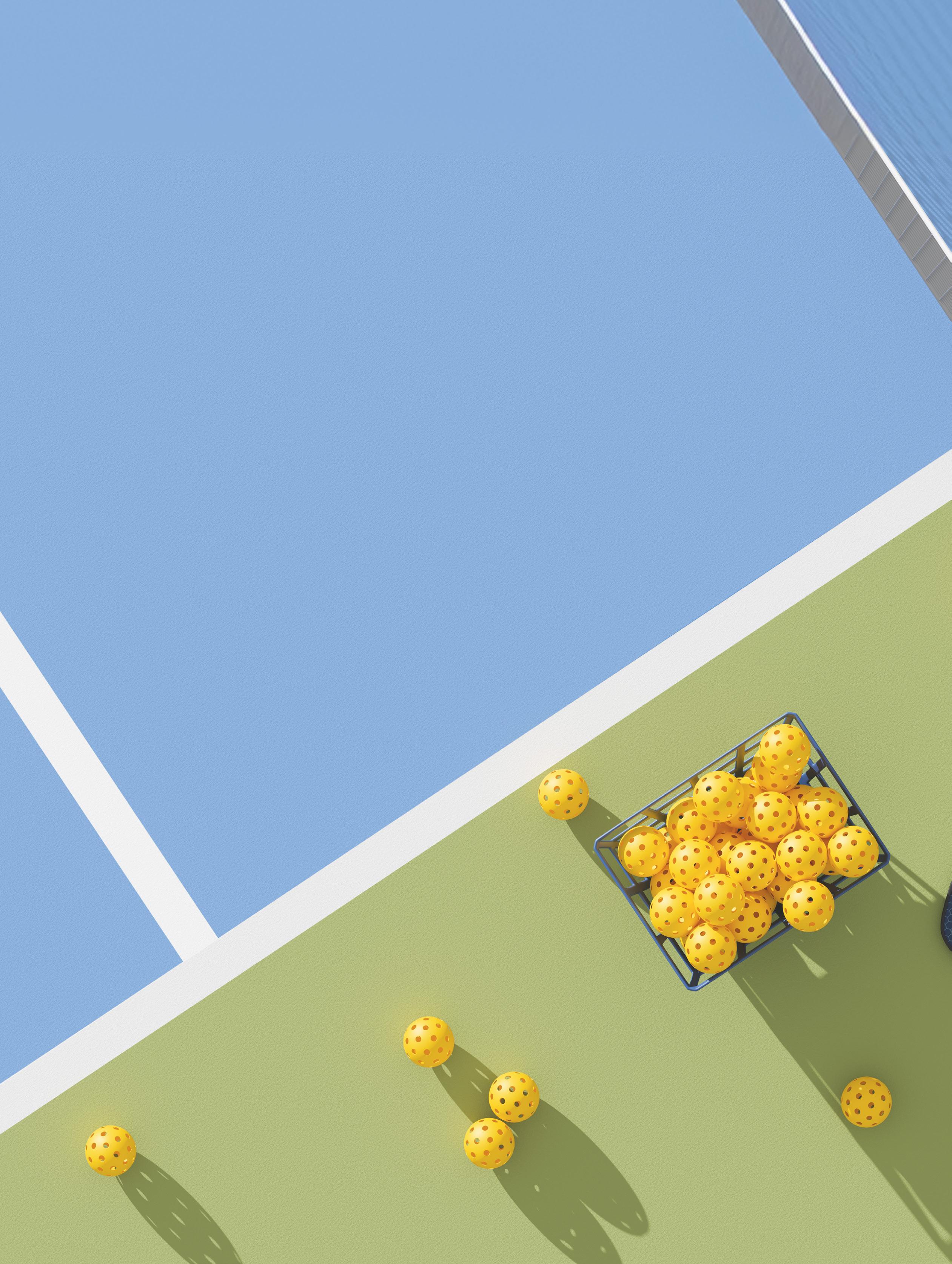
have embraced pickleball, and it has paid off. We have seen our fair share of growing pains, conflicts between tennis and pickleball, etc. At the end of the day, I’ve added another amenity to our club’s offerings to our membership. We have been successful in getting our “golf widows,” social members as well as other members who just weren’t
utilizing their membership to come out, get a workout and enjoy their facilities.
As the director of racquet sports, I work hard every day to maintain the integrity of our programming—juniors, ladies’ leagues, men’s leagues, quality lessons, facilities, socials, etc. We hold inner club tournaments for pickleball, have social events multiple times a year that incorporate both tennis and pickleball players mingling and playing together on the same teams. It takes a lot of work, but I have surrounded myself
with quality people to help me every step of the way, but I must tell you, it truly is a labor of love. My members played a critical part in the success of our journey as well, without their support and encouragement, we wouldn’t be where we are today. The bottom line for me is that pickleball is not the enemy, it has been the shot in the arm that afforded my tennis program the opportunity for our many improvements, including the LED lighting as well as a complete remodeling of our clubhouse!

The RSPA has taught me over the years to continue to learn, evolve, strive to improve myself through education and to network!
I’ve met countless professionals who I’ve not just learned from but can now call friends.
To the national leadership and our CEO, Brian Dillman, thank you for continuing to push the envelope forward for all teaching professionals. Thank you for representing
our interest in all racquet sports. Thank you for having the courage and foresight to think outside the box, for giving all of us more opportunities to improve our craft, for giving us access to new areas to further develop not just our knowledge, but our client base. To put it simply, my staff and I have doubled our lesson base with tennis and pickleball. I just wish now that our club had room enough for me to add a couple of padel courts…stay tuned —remember, a good RSPA professional adapts, figures it out and gets things done; this story isn’t over yet!
Proud RSPA Member, Simon Paek, Elite Professional Regional Vice President Southern California Division, Coach Developer – Tennis and Pickleball, Director of Racquet Sports and Mission Viejo Country Club.


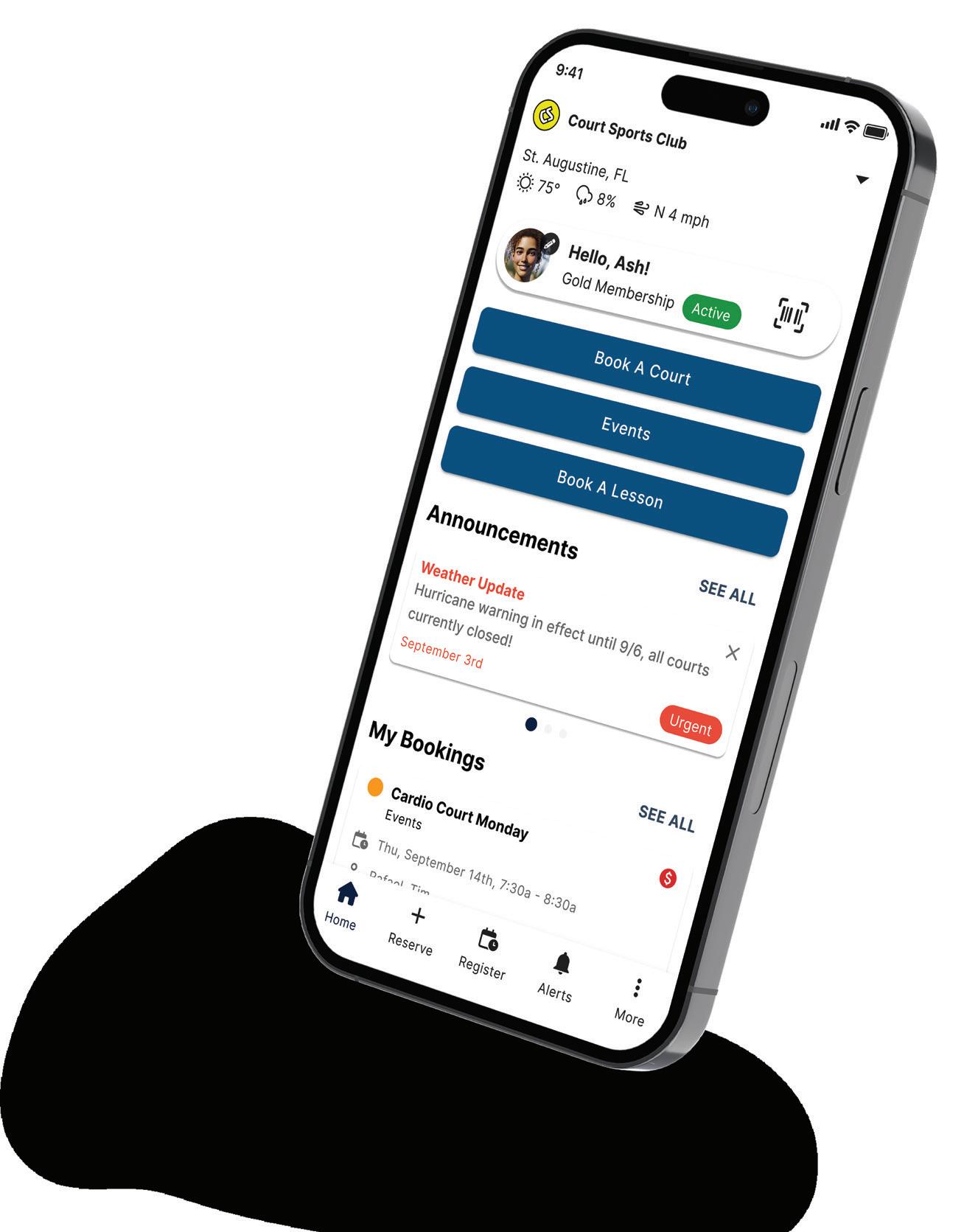








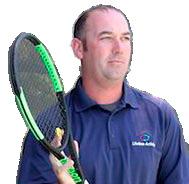
Joe Noth | RSPA Elite Professional
rom office maintenance and janitorial staff to tennis and pickleball instructors, we all play different rolls at the clubs and facilities we call our place of work or job. Currently on my team of staff there are: high school and college students working around classes, part time contributors with other full-time careers, retired career professionals who choose to take part-time hours, non-certified full-time instructors and certified full-time teaching professionals.
All these team members come from different playing, teaching, educational and development backgrounds. They all have different levels of experience, from first time jobs to seasoned professionals with thousands of lesson hours. But all these team members deserve the same level of respect, attention, acknowledgement and common or professional courtesy as any other member of the team.
Basic Workplace Courtesy
Say please, thank you, excuse me and no thank you-smile! Hold the door open for others, follow organizational rules, keep your workspace tidy and clean up your messes. When given the opportunity, acknowledge each other with a simple ‘hello,’ or ‘good morning.’ Ask what you can do, as opposed to telling others what they can do. It is not your job to be the courtesy police or point blame on one another. But it is your job to always conduct yourself in a professional manner and respect the individuality of your teammates. We want you to feel comfortable working with all team members and when not we want you to feel free to express any concerns you have with your direct supervisor.
“People don’t care how much you know; they care how much you care.” –Master Professional, Ajay Pant
Research shows that we are judged 85 percent on our social skills and 15 percent on our technical ability. The perceived culture of any organization begins at the first point of contact a person receives. A positive patron experience is essential to maintaining student retention and creating a great company. In the same way with staffto-staff engagements, your perceived impression of your teammates will likely be based on how well you respectfully address, greet and communicate with one another.
“We like people who like people.” - Lifetime Activities CEO & USTA NorCal Hall of Fame Inductee - Dana Gill
Communication is Key:
Take time hear what others say and hear what they are not saying. We communicate in many ways: our tone of voice, facial expressions and hand gestures (or even how a ball is fed: aggressively/ gently) can impact a team member or patrons view of you and the company that employs you. We’re communicating with others all the time. Make it positive and make it count! If you’re with a member or patron (on or off site), you are at work. If you’re on site and not in uniform, you’re at work and should conduct yourself in a professional manner regardless of being clocked in or not.
It’s easy to see how important and powerful common and professional workplace courtesy can be. Be a team player, be friendly, be encouraging, respect your teammates, give people the benefit of the doubt and even if on paper you are not a certified professional, that doesn’t mean you can’t act like one.
Each month, the RSPA will use this column to select someone who helps our association run to give better insight into what the many faces of our association do to grow racquet sports. This month we are featuring Dominique Lemperle, RSPA Pickleball Lead Coach Developer.
Dominique Lemperle has had a 15 year career that left an incredible mark on the racquet sports industry. She served as the director of sports at Esplanade Golf & Country Club, and managed a thriving program, overseeing more than 450 pickleball players and 750 bocce ball enthusiasts. Prior to this role, she was an assistant at Bonita Bay Club, managing several staff members and collaborating on youth golf camps, demonstrating her commitment to the betterment of future talent. Previously, as the director of programming and instructor development at The Pickleball Club, she led with tremendous initiatives to elevate the sport, bringing success to the club and it’s members. Lemperle recognized the potential of pickleball, early-on, understanding the opportunity it presented for racquet sport professionals. Her extensive knowledge and tireless dedication is what makes her a phenomenal coach developer. As an RSPA Elite Professional, Lemperle has earned numerous certifications and awards, including 2023 George Basco Coach Developer of the Year. In March 2025 ,Lemperle shared valuable insights on club success with CEOs at the Racquet X Club Summit. She is now applying her expertise as Head Pro at Lakewood National in Bradenton, FL, teaching tennis and pickleball, and pursuing a Director of Racquets role at an equity country club. Her vision goes far beyond individual players, focusing on the growth of sustainable programs and building a strong community with a passion for racquet sports. She actively shares her expertise, inspiring soon-tobe professionals and ensuring the continuation of the industry.
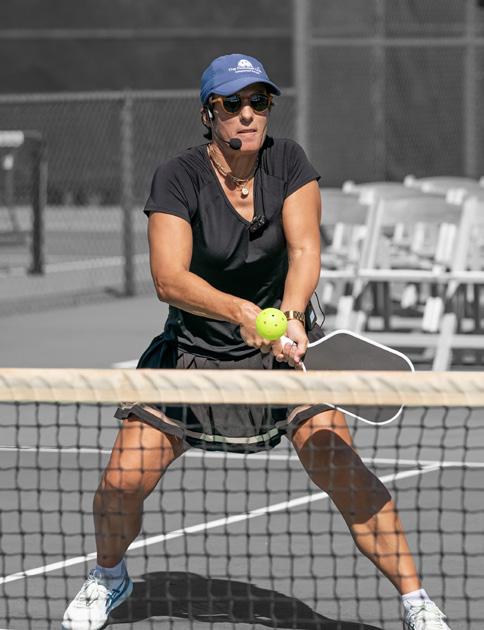














PHOTO

Flink, International
CREDIT: Fred Mullane, CameraworkUSA
include myself among many longtime members of the tennis community who were aware that Fred Stolle was struggling inordinately with his health over the last couple of years. Be that as it may, the news of his death at the age of 86 on March 5 was awfully difficult to accept. Stolle was a man of immense stature and congeniality, a very accomplished individual, and one of a long line of redoubtable Australians who enhanced tennis incalculably with the way they wore success and how they dealt with defeat.
Stolle took home a lot of high honors in his time as a top flight player in both amateur and professional tennis. His two most impressive triumphs came at the French Championships in 1965 and the U.S. Championships the following year. In the former, competing on his
least favorite surface, Stolle captured the world’s premier clay court title at Roland Garros in Paris.
Seeded fourth at that major, he pieced together some terrific victories on the dirt, defeating the tenacious American Cliff Richey in the third round, countryman John Newcombe in the quarterfinals, No. 8 seed Cliff Drysdale in the penultimate round and the left-handed Tony Roche in a four set final.
As Stolle told me in a 2010 interview, “My victory at the French was a bit like Andre Agassi winning his first Grand Slam event at Wimbledon in 1992. You felt that Andre was going to win a major somewhere at one stage, but it was not supposed to be on grass courts, which he had said he hated. The French was not the one I was supposed to win. I was lucky that the weather was warm and we were playing with pretty light Slazenger balls. And the courts were quick to the point where I served-and-volleyed pretty much every first serve.”
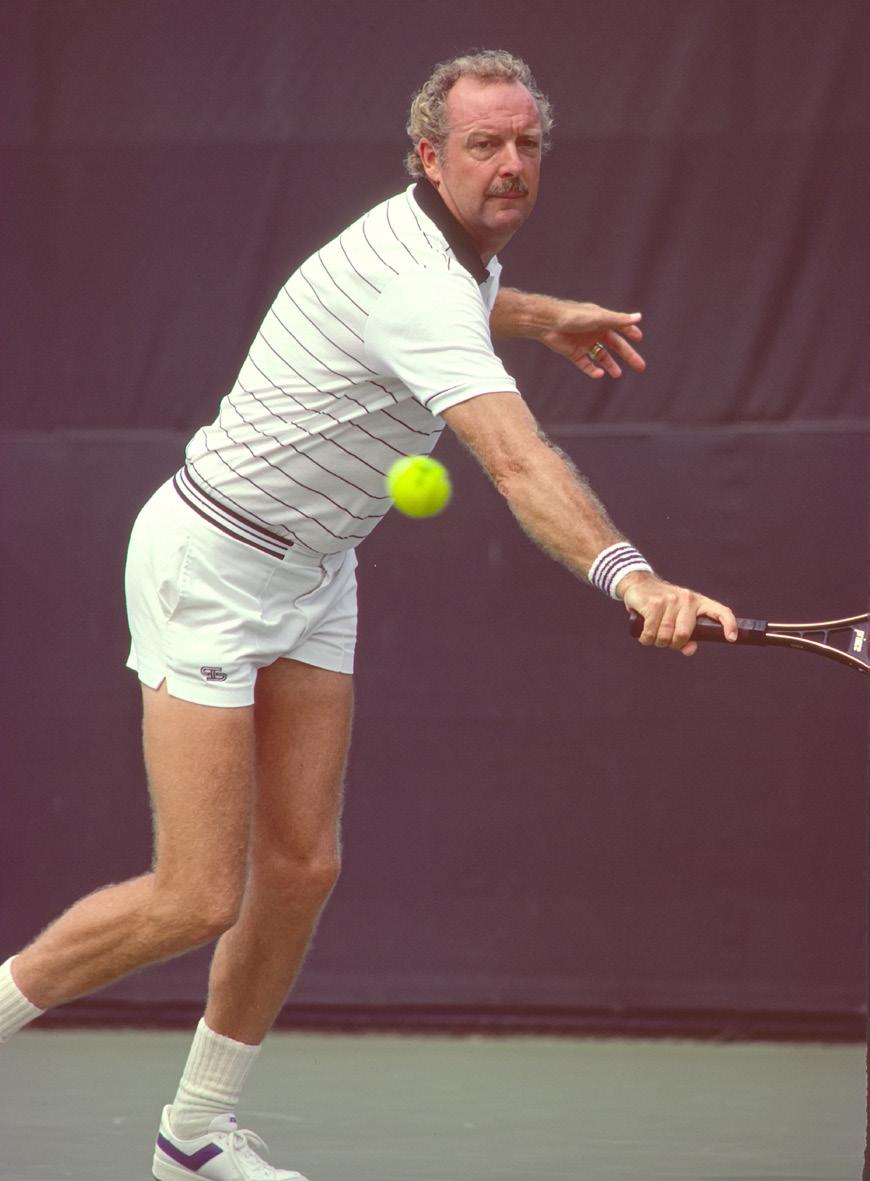
That was Stolle’s brand of tennis. He was one of the premier serve-and-volley stylists of his era at a time when three of the four majors were played on grass. That is why his triumph at the 1966 U.S. Championships on the lawns at Forest Hills in New York was fitting and very rewarding.
Despite having reached the final at Wimbledon three years in a row from 1963-65, the seeding committee overlooked Stolle at the last major of 1966. He was infuriated by that indignity. But that slap in the face may have

been a blessing in disguise. Determined to prove that the men in suits who made that seeding decision were embarrassingly wrong, Stolle went determinedly to work and played beautifully.
He upset No. 3 seed Dennis Ralston in the round of 16, cut down No. 7 seed Clark Graebner in the quarterfinals, defeated No. 2 seed and close friend Roy Emerson 6-4, 6-1, 6-1 in the semifinals and then ousted John Newcombe in a four set final. It was indisputably the finest fortnight of his life.
Was a quiet rage from within what won that championship for Stolle? He told me in 2010, “There is some truth to that. In those days, they seeded only eight players. I had lost to Bob Hewitt in the second round of Wimbledon so they thought I was over the hill and finished. When I beat my nemesis Emerson in the semifinals at Forest Hills, I remember hitting every line on the court that day, particularly on my return of serve. It was just one of those days when nothing could go wrong for me.”
Stolle celebrated a stellar career. He was not cut out to be a Rod Laver, a Ken Rosewall or a Lew Hoad. He was not the equal of John Newcombe despite some
big wins over his countryman. They were all icons from the land “Down Under.”
But Stolle was at least a finalist at all four majors in singles but his doubles record sparkled even more. In an era when the leading players almost always played doubles and often competed in mixed doubles, he took another ten majors in men’s doubles and six in mixed for a total of 18– not including the 1969 Australian Open Mixed Doubles crown when he partnered Ann Haydon Jones. When the final was canceled, they shared the title with Margaret Court and Marty Riessen. Stolle was victorious at the majors with Emerson, Bob Hewitt, Ken Rosewall, Court and Lesley Turner Bowrey. Meanwhile, he played a pivotal role in leading Australia to three straight Davis Cup victories from 1964-66.
Stolle moved into professional tennis in 1967 at 28. As he told me, “It was a lot tougher than I thought it would be. Open Tennis came along in 1968 and I did all right at the Grand Slam tournaments, but playing the WCT Tour was a grind. I got to the stage where I went through the motions during some matches. It amazes me that today everybody expects the top players to go out and win every match they play, which was true in my day as well. You would try, but you didn’t always have your heart and soul in it.”
33 after an unexpected run to the quarterfinals of the U.S. Open, Stolle shifted to commentary and was one of the best in the booth for more than two decades, working for ESPN in the U.S. and Channel Nine in Australia.
I met Stolle in 1967 and got to know him well as a reporter in the 1970s. Starting in the early eighties, I worked with him on monthly instruction pieces for World Tennis Magazine. Sometimes

Most of the time, however, he competed forthrightly. Stolle was a thorough professional. Once he retired in 1972 at

we collaborated on these articles in person at tournaments. Otherwise, I would track him down by telephone from my New York office.

When Stolle would answer my calls at hotels all over the planet, he would laugh and say, “I can’t believe it. It doesn’t matter where I am. You can reach me anywhere in the bloody world. How do you manage to do that over and over again?” I answered, “Because it’s my job.” We would catch up regularly at the Grand Slam tournaments long after we stopped working together. What made Stolle such a superior human being was his uncommon decency and candor. If we had a difference of opinion from time to time, he would let me know exactly how he felt without being disagreeable. Then he would inevitably break into that infectious laugh he loved sharing with friends.
Stolle was completely comfortable in his own skin, and he could get along with different types of people who did not always like each other. I will miss his flinty integrity, his words of wisdom and his sense of humor. Fred Stolle was an Australian through and though, and one of the most honorable individuals I have ever known in tennis.
His tennis mind was nimble. Stolle would invariably offer sagacious tips to readers. It was a pleasure working with him. Stolle travelled so widely that it was not always easy to find him. Somehow, I always did in the days when cell phones were not in circulation and the internet did not exist.
Mark McMahon | RSPA, CRSE – President, McMahon Careers & Rachel Stofan | McMahon Careers Director of Communications
When the USPTA rebranded to RSPA at the 2024 World Conference, it marked the beginning of a new chapter for its members. This rebrand is more than just a name change. The new RSPA is focused on offering members targeted professional development, accessible certification opportunities, and specialized educational webinars to help them grow and advance in their careers.
One of the key initiatives under the rebrand is RSPADirectorSearch, powered by McMahon Careers, which focuses on career advancement. This service is designed to help members navigate the competitive job market, providing a streamlined experience when applying for or posting director-level positions in racquet sports leadership. Whether you’re actively job hunting or just considering a career change in the future, RSPADirectorSearch can support your journey.
Being proactive in managing your career is a strategy that pays off. RSPADirectorSearch offers several resources to help members better prepare for job applications and interviews. These include:
Members can access detailed job postings that include estimated total compensation (base salary and variable income from instruction and other sources), expected on-court hours, program size, and current staffing structure. With this transparency, members can apply to one or more positions and track the status of their applications through a secure, personalized Candidate Portal.

Powered
For those ready to take the next step in their careers, RSPA members have access to several free career-enhancing tools, including:
• Resume and Cover Letter Resources: These resources provide guidance on crafting documents that highlight your unique skills and experiences, helping you stand out to potential employers. They emphasize the importance of creating a balance of ‘confidence and curiosity’ in your application materials.
• Interview Preparation: The Interview Preparation tools help members make a strong, positive impression during interviews, whether in person or virtual. By following the outlined steps, members can ensure they’re fully prepared and confident for each stage of the interview process.
• Career Planning & Career Discovery: Just as players have coaches to guide their development, career professionals can benefit from career coaching. RSPADirectorSearch offers a complimentary Career Discovery Call with an RSPA Master Professional, where members can discuss their career paths and receive personalized advice on next steps.
The YPG is a network for professionals with less than 20 years of experience in the racquet sports industry. This group meets quarterly via Zoom to share experiences, discuss career progressions and provide valuable insights into career growth. Additionally, the group maintains ongoing conversations on its LinkedIn page.
In 2025, RSPA DirectorSearch will host a four-session webinar series called “From Interest to Interview – How to Identify Your Next Role and Compete for a Job as Only You Can.” Recognizing May as “Careers Month,” this series will focus on helping members identify career opportunities and position themselves for success in their job search.
The future of racquet sports is bright and RSPA members looking to advance their careers can rely on RSPADirectorSearch, powered by McMahon Careers. To access these valuable benefits and learn more, visit RSPADirectorSearch.net.


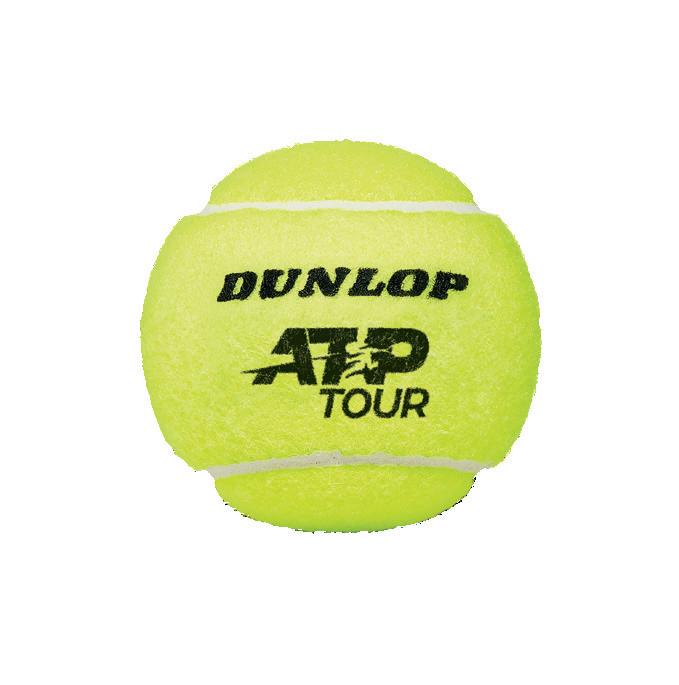

SAME GREAT PERFORMANCE

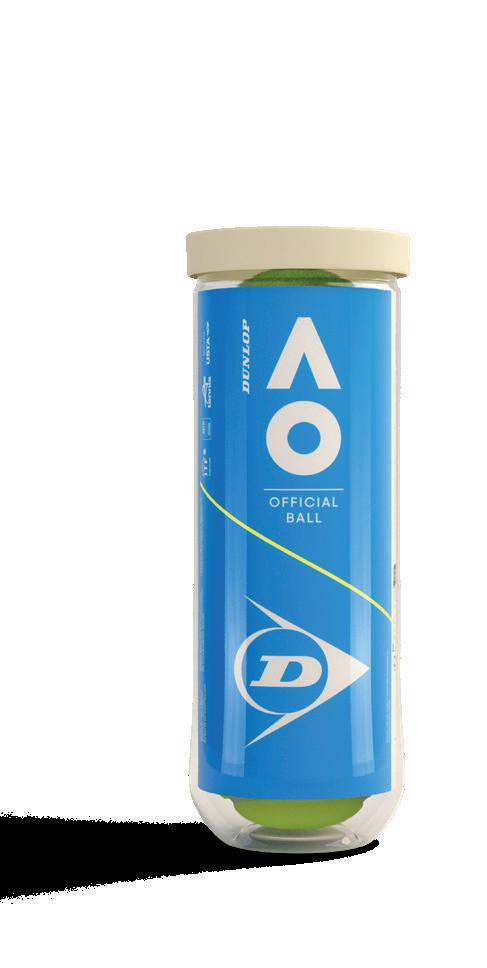


PAPER LID














Jim Stockwell | RSPA Chief Service Officer
Becoming a certified member of the RSPA is more than just a credential—it’s a mark of excellence in the world of racquet sports instruction. As an RSPA-certified professional, you gain a trusted certification that validates your teaching skills, giving you a competitive edge when attracting clients and securing employment. But our support doesn’t stop at certification. We provide a range of benefits designed to help you grow, thrive and succeed in your career, whether you’re just starting or looking to take your coaching to the next level.
• Full Access to TennisResources.com, the RSPA’s online education resource library.
• RSPA World Conference discounts and division conventions.
• Free monthly webinars and online educational opportunities.
• Discounts/complimentary tickets to US Open Series tournaments.
• $6 million of on-court liability insurance.
• Ability to purchase additional insurance products such as facility, sexual and molestation and non-member assisted coverage to qualified members.
• Health insurance options via Lighthouse Insurance Group partnership.
• Apparel and Footwear: 30 percent member-pricing discount; brands included: Nike, adidas, Asics, FILA and 40 percent discount off MSRP for inventory purchased for pro shop distribution on adidas products.
• Equipment: 20 percent discount on Babolat, Tecnifibre and Prince and 40 percent off Prince products for pro shop retail accounts.
• Order tennis balls directly from Dunlop and receive a 15 percent discount on retail pricing on all orders on the Dunlop website. Receive low shipping costs of $5.95 per case through the Dunlop website.
• Receive discounts on Selkirk pickleballs, nets and equipment. Wholesale pricing for facilities with ARP accounts.
• Free educational content on SelkirkTV.
• Get $30 off the Pro subscription or Bundle, plus early access to Remote Coaching. Elite and Master Professionals save $80.
• RSPA children grades 6-12 get 10 percent discounted tuition. Students enrolled in ICL Academy and recommended by an RSPA pro gets 20 percent discounted tuition.
• 10 percent member-pricing discount.
• Free membership includes access to a digital learning platform and exclusive discounts on Kliq, a remote coaching app that helps you deliver instruction and engage students online.
• Purchase court equipment product at a special discount.
• Exclusive discounts on TUFFY windscreens and nets by contacting 10-S Tennis Supply.
• Official Playing Surface of the RSPA. For court surfacing needs, contact SportMaster directly for information and support.
• 5 percent discount on the purchase of products.
• Exclusive discounts on padel court installations and priority access to new facility developments.
• 5 percent discount on the purchase and use at their facilities.
• 5 percent discount on the purchase and use at their facilities.
• RSPA members get a free month of texting service at 500 SMS level including 1 free phone number and 30 minutes of free onboarding.
• Receive a free PlayYourCourt PLUS account ($120 per year value).
• Official Ball Machine and Pickleball Ball Machine of the RSPA.
• Gain expanded access to courts, programming opportunities and educational resources.
• Access exclusive discounted resort stays in exchange for 10 hours of coaching per week.
• Members receive discounts on USA Padel Directory memberships, gaining networking opportunities, visibility and job listings within the padel community.
• Access exclusive discounts on high-quality windscreens, netting, and court equipment designed to elevate your facility.
• Preferred LED lighting and ceiling liner solutions for RSPA members to enhance indoor court performance and visibility.
• Members receive discounts on reused tennis balls, access to a virtual sustainability course eligible for recertification credits and involvement in sustainability education initiatives.
• Unlock exclusive financing solutions for Padel court construction—designed to support clubs in expanding their facilities and bringing the world’s fastest-growing sport to more players.
• Gain access to exclusive director-level job opportunities and personalized placement support through a nationwide network and expert career consultants.
• Tennis Industry Magazine with ADDvantage.
• Refer & Earn – Membership referral dues discount program.
• Avis Car Rental – Save up to 30 percent at participating locations.
• Enterprise Rent-a-Car – Save up to 5 percent at participating locations.
• National Car Rental – Save up to 10 percent at participating locations.
• FTD Florist – 20 percent product discount.
At the RSPA, we are committed to your success as a racquet sports teaching professional. From certification to ongoing professional development, networking opportunities, and exclusive resources, we provide the tools you need to elevate your career. By joining our community, you’re not just gaining a certification—you’re becoming part of a network dedicated to the highest standards of teaching and coaching excellence. Let us help you build a rewarding and successful future in racquet sports. To learn more about these and other membership benefits, go to rspa.net or contact our membership team at 407634-3050, option 2.































P R I E N C E T H E








































